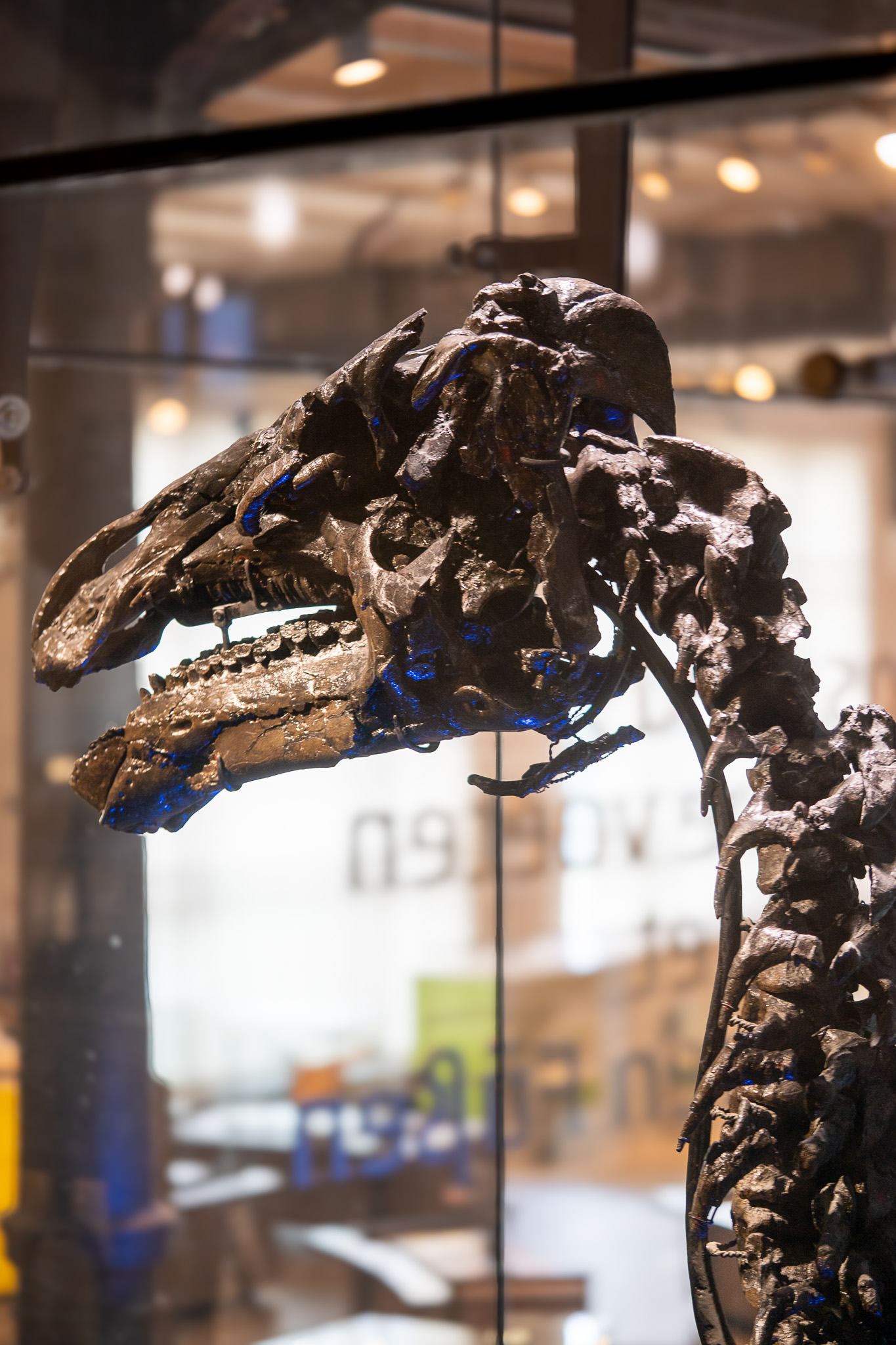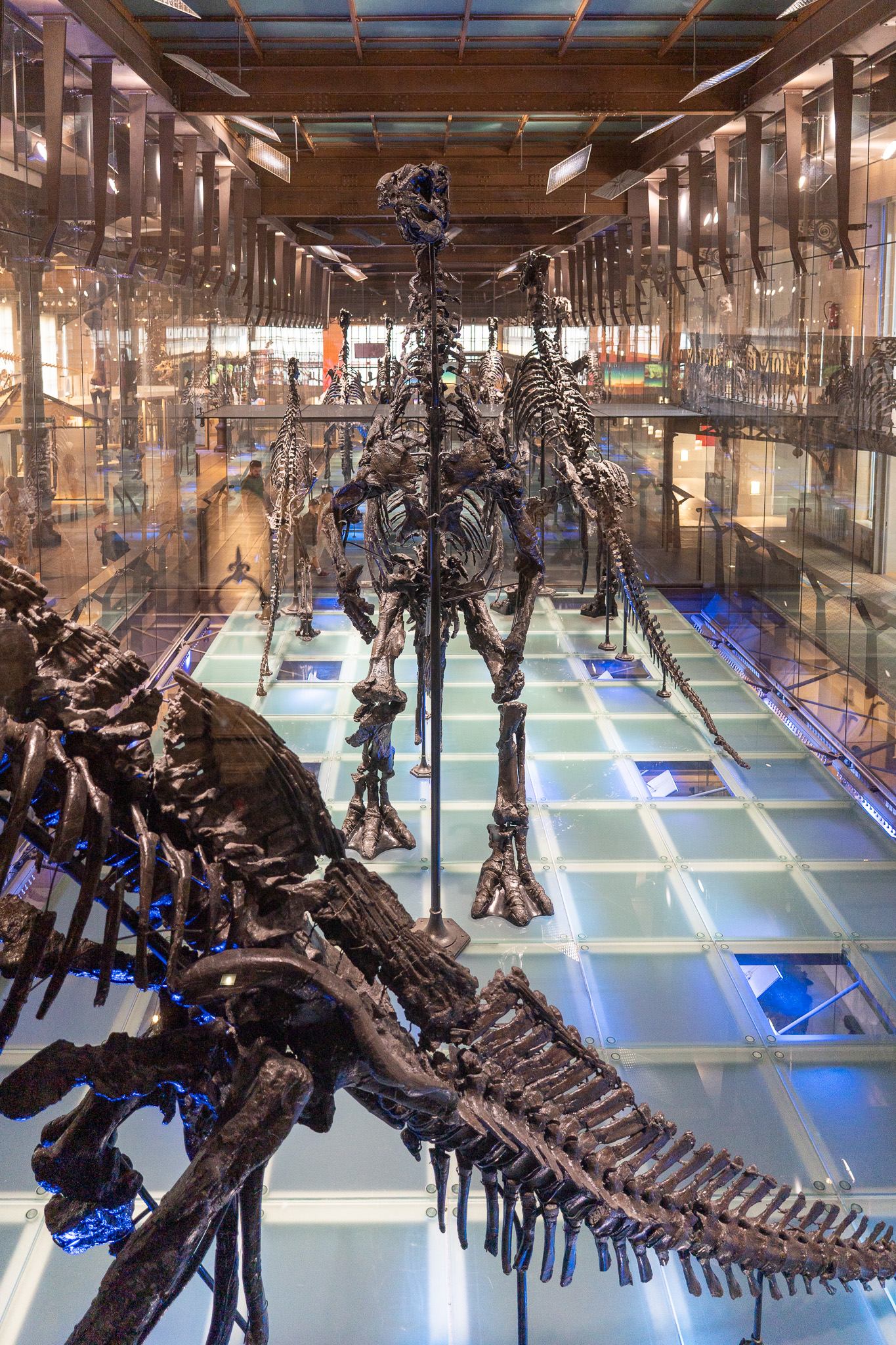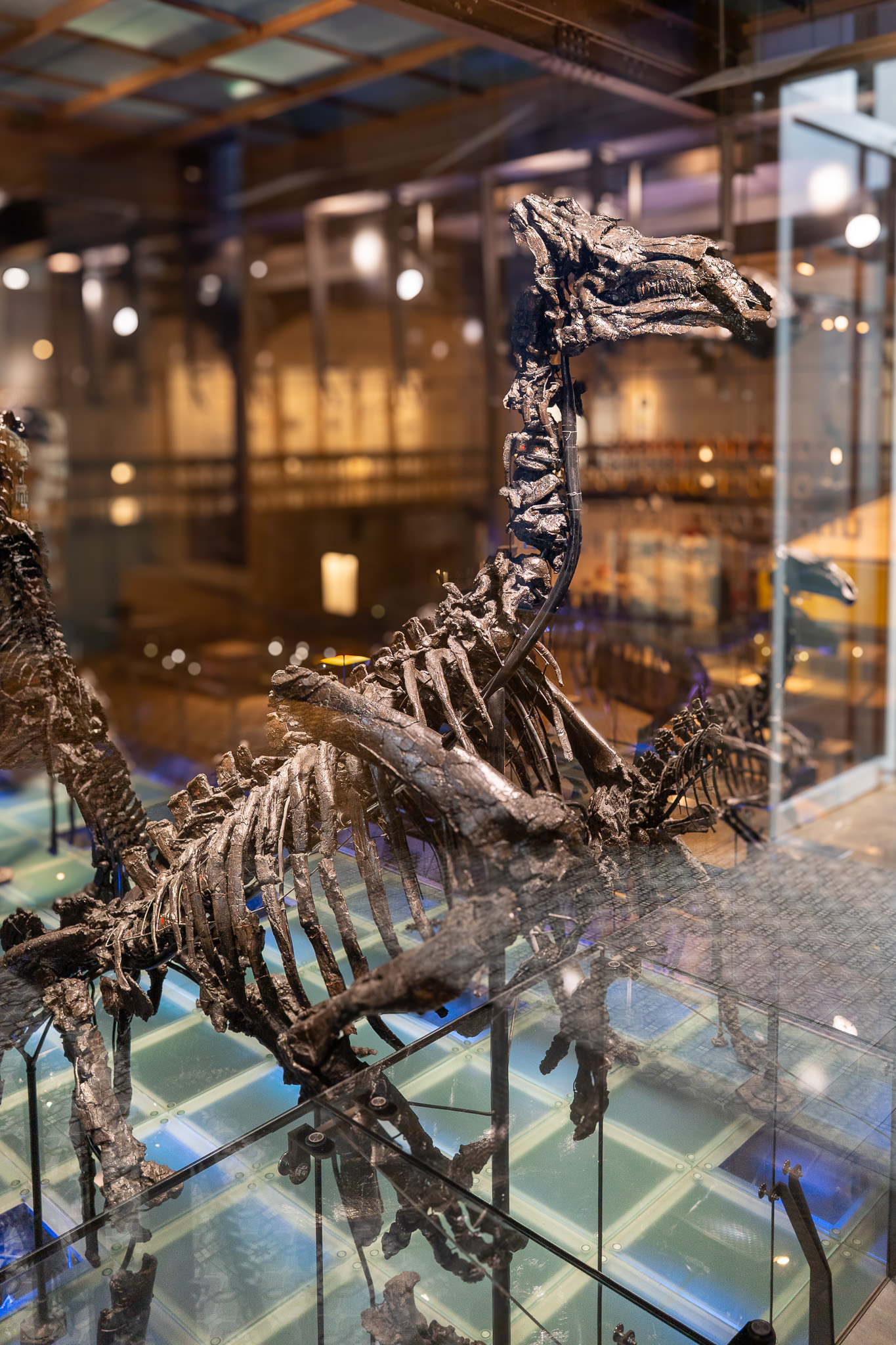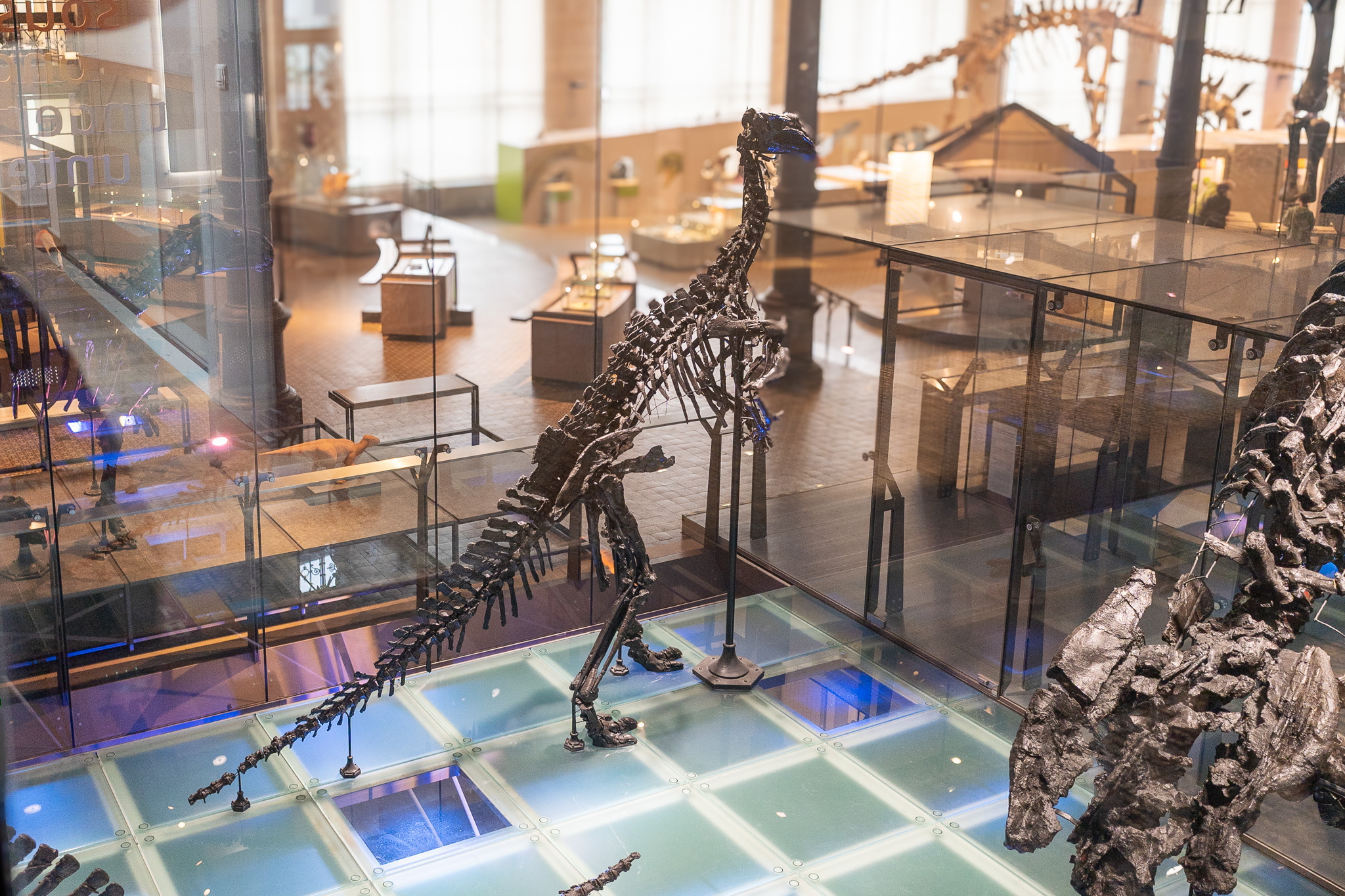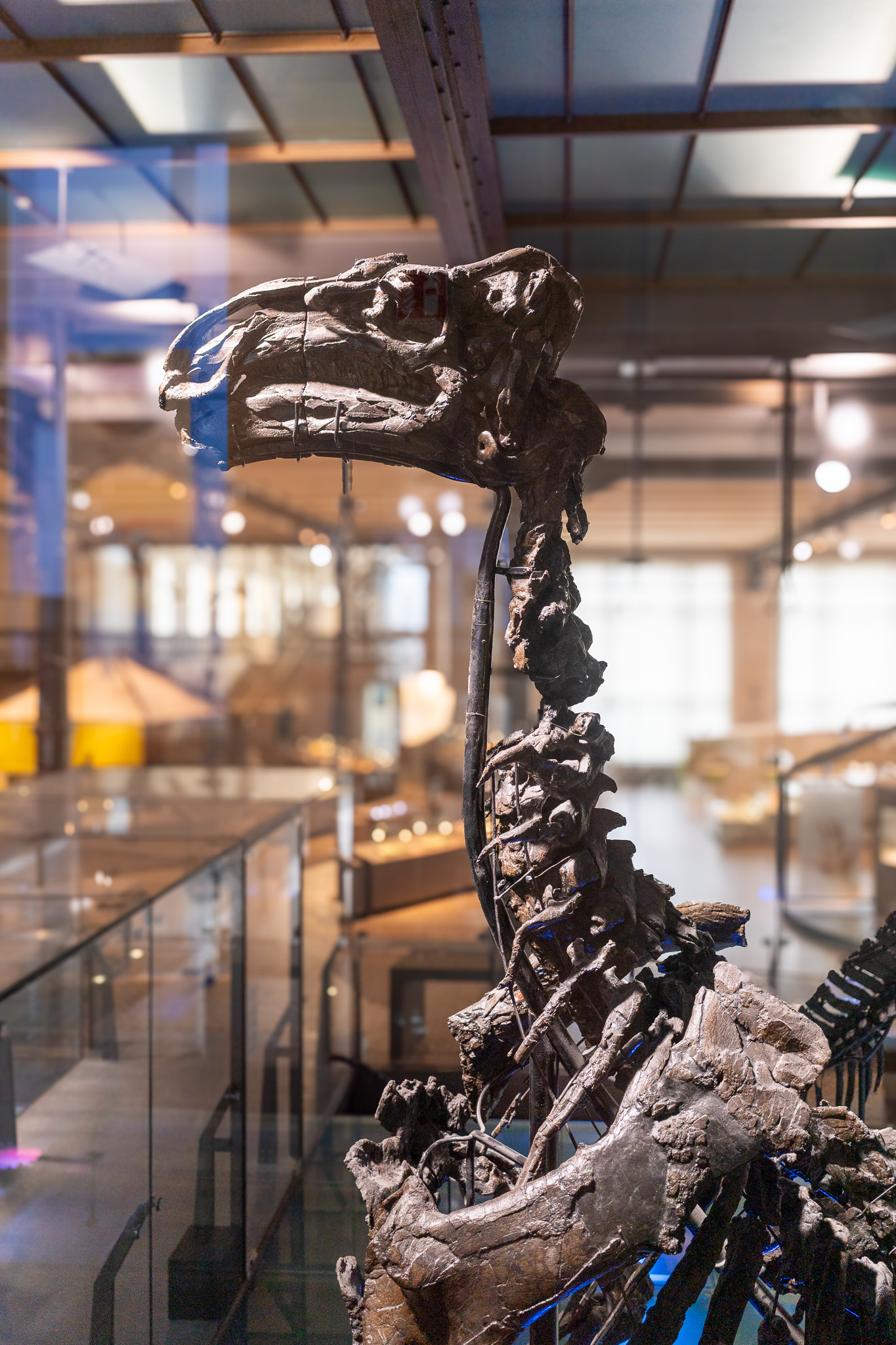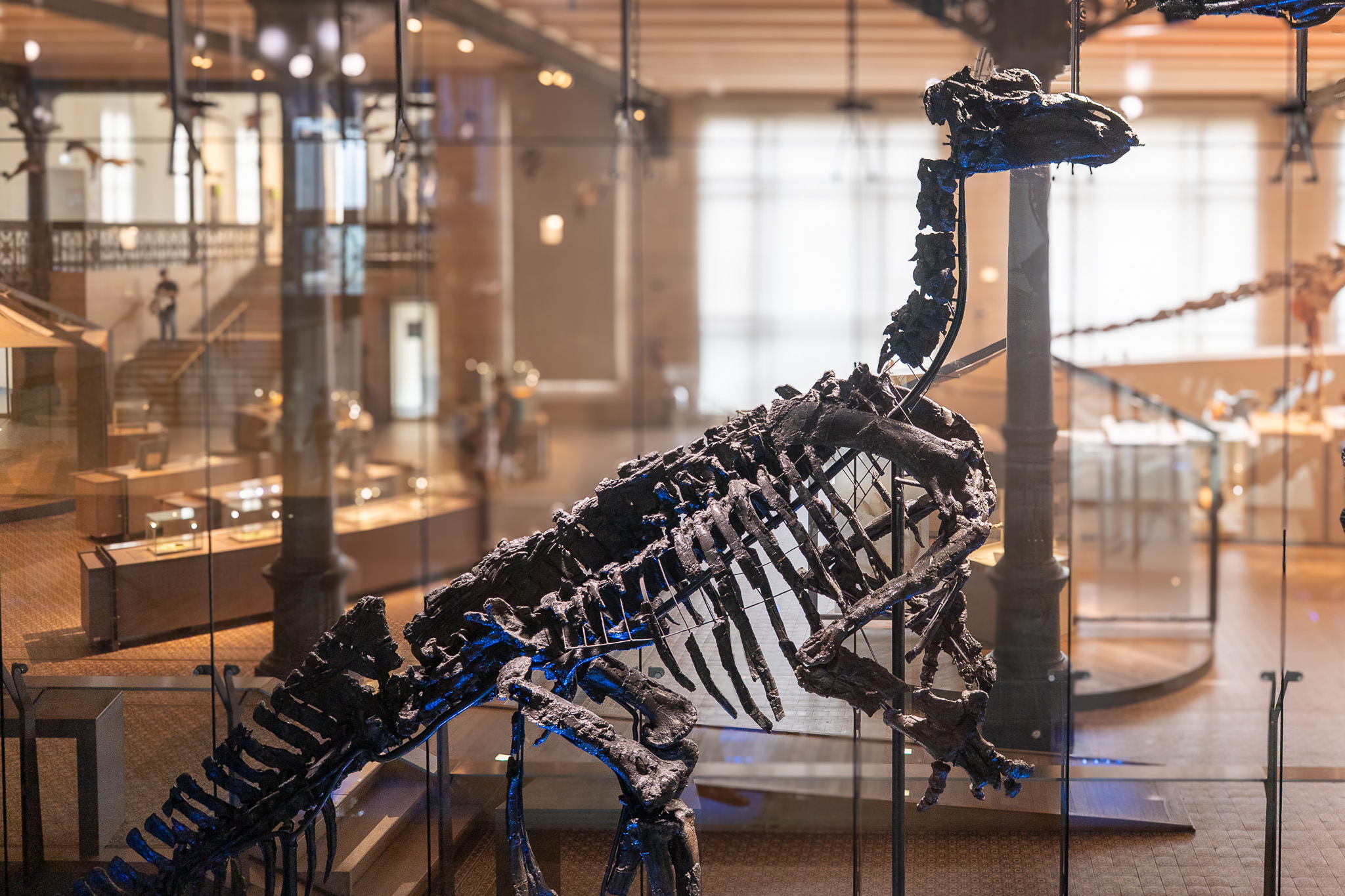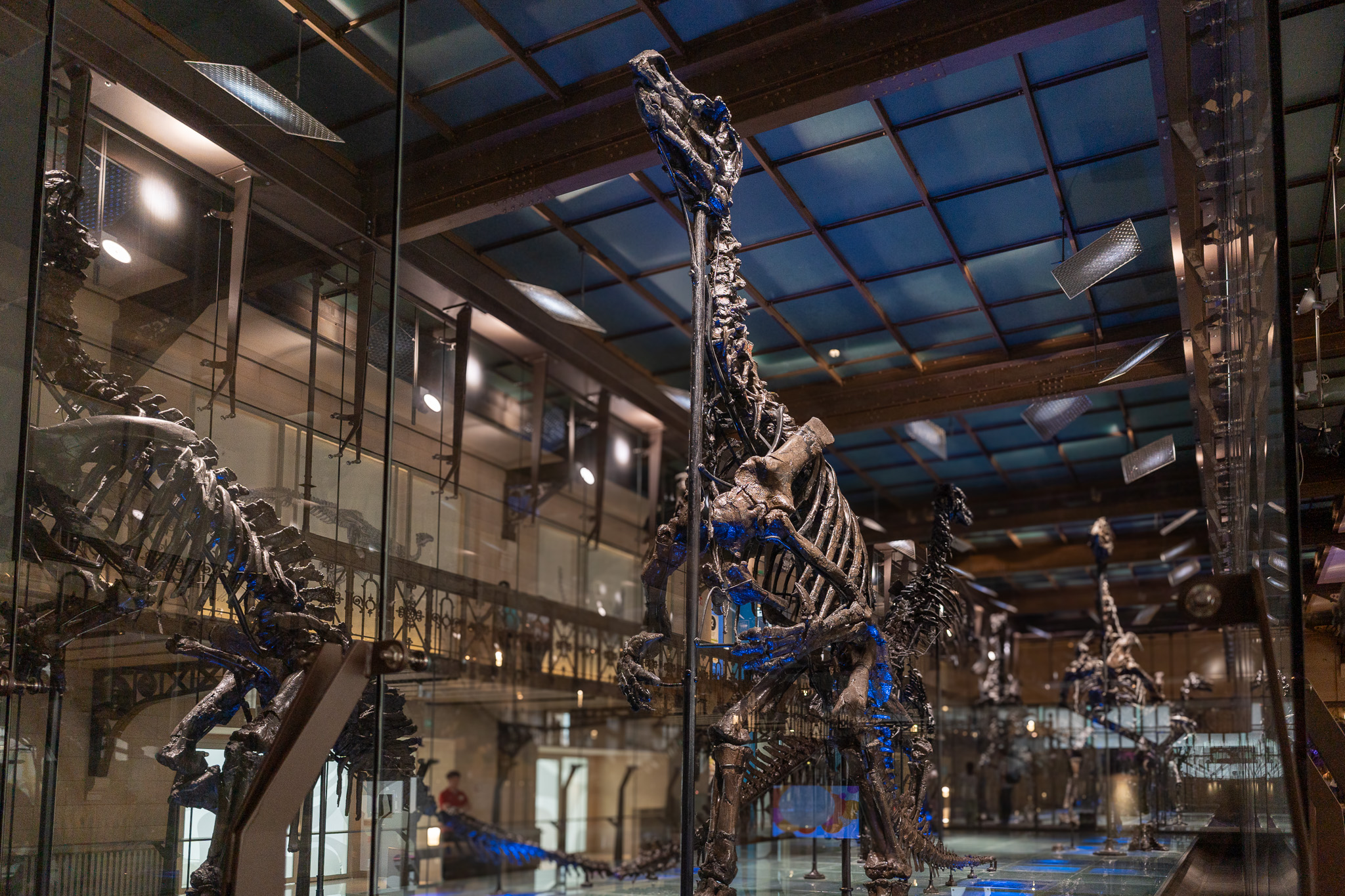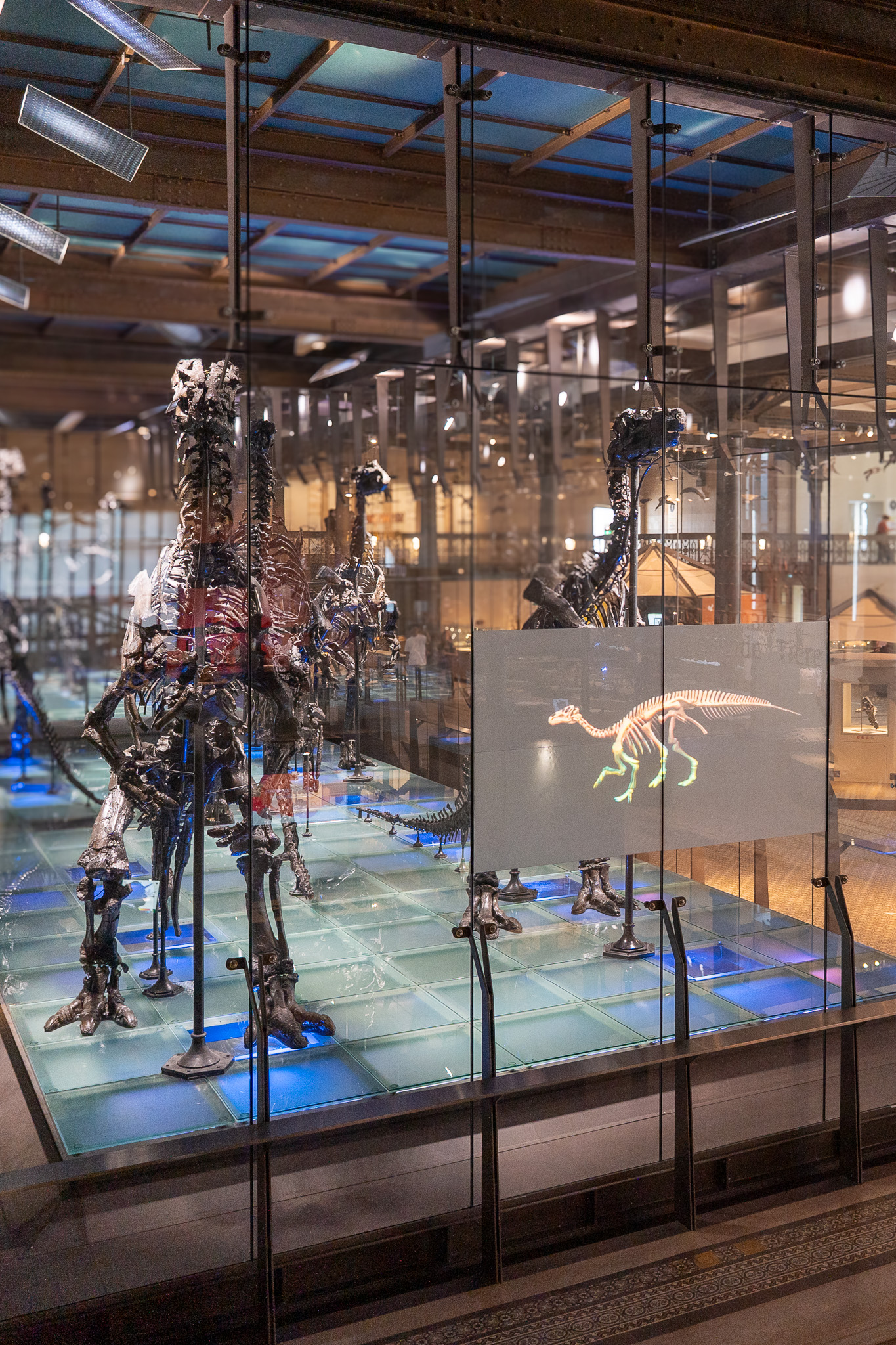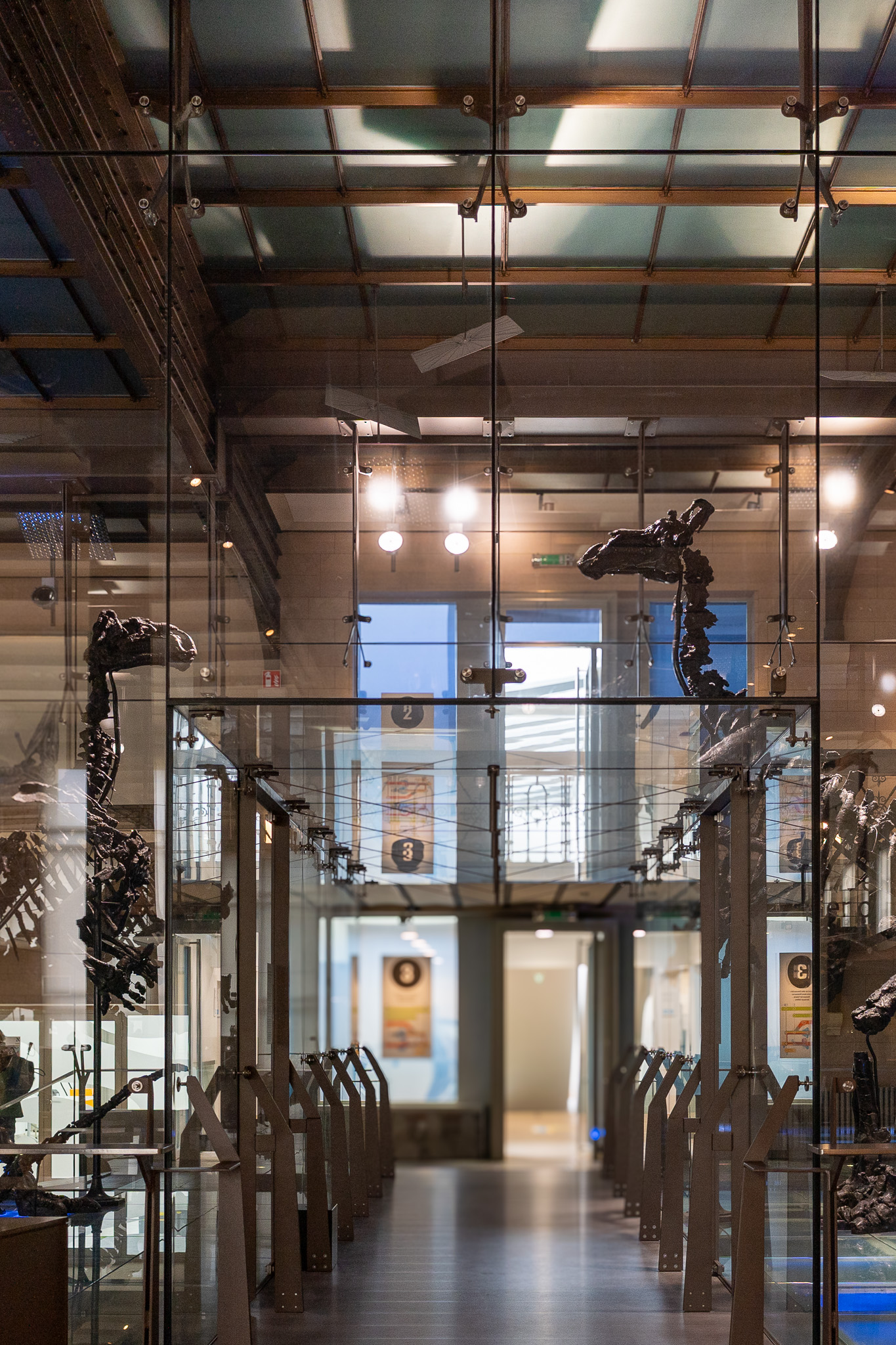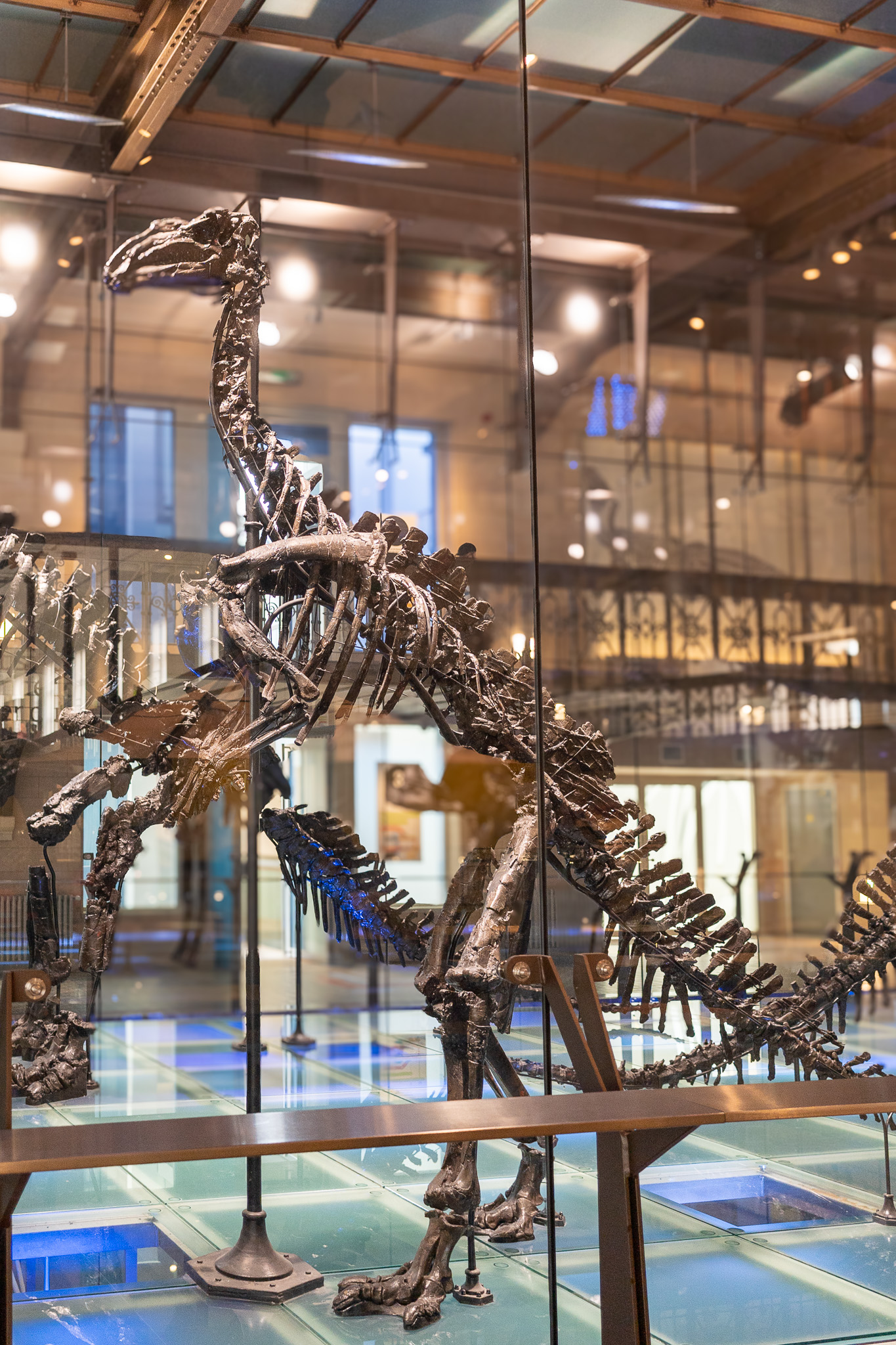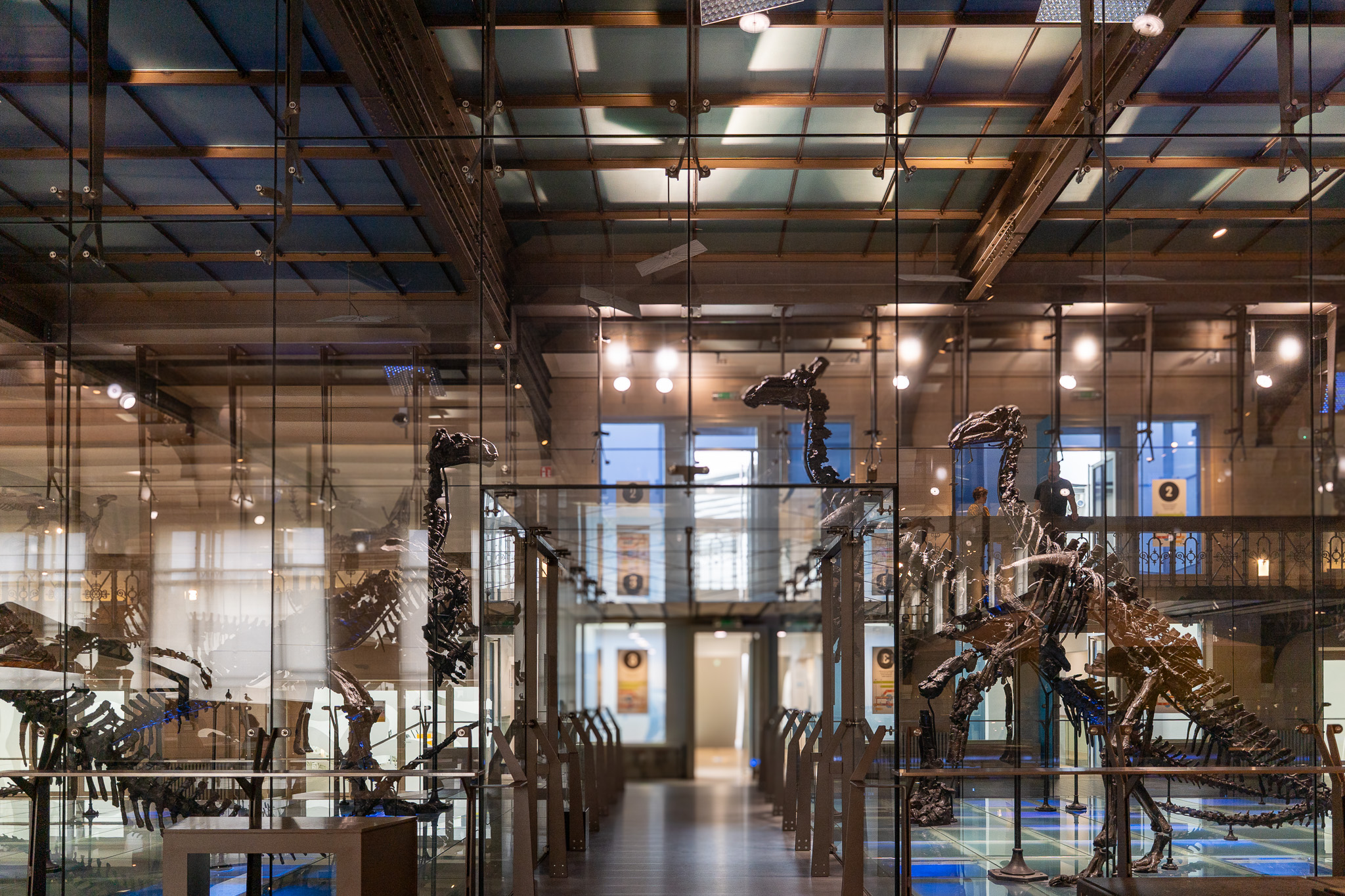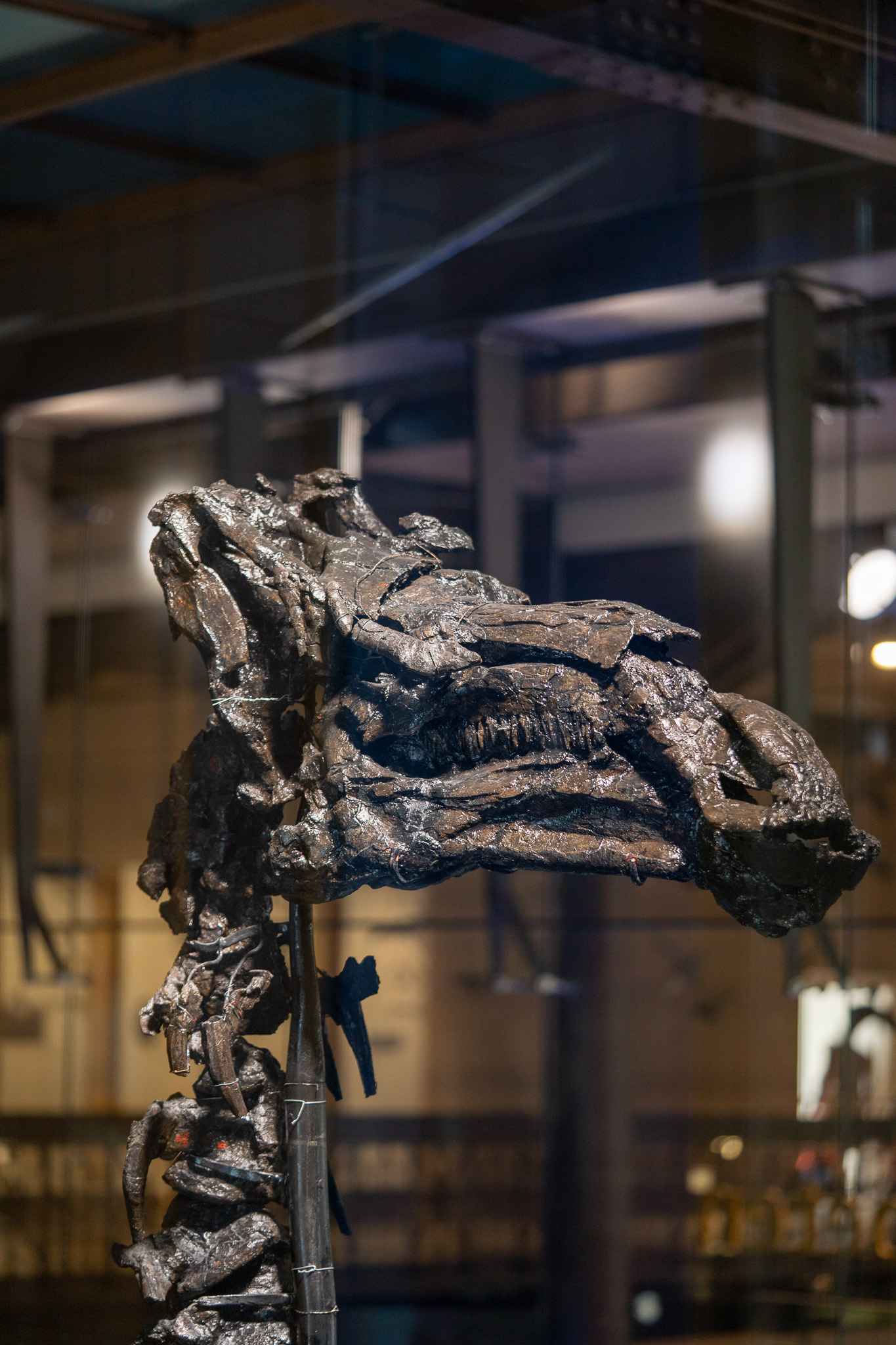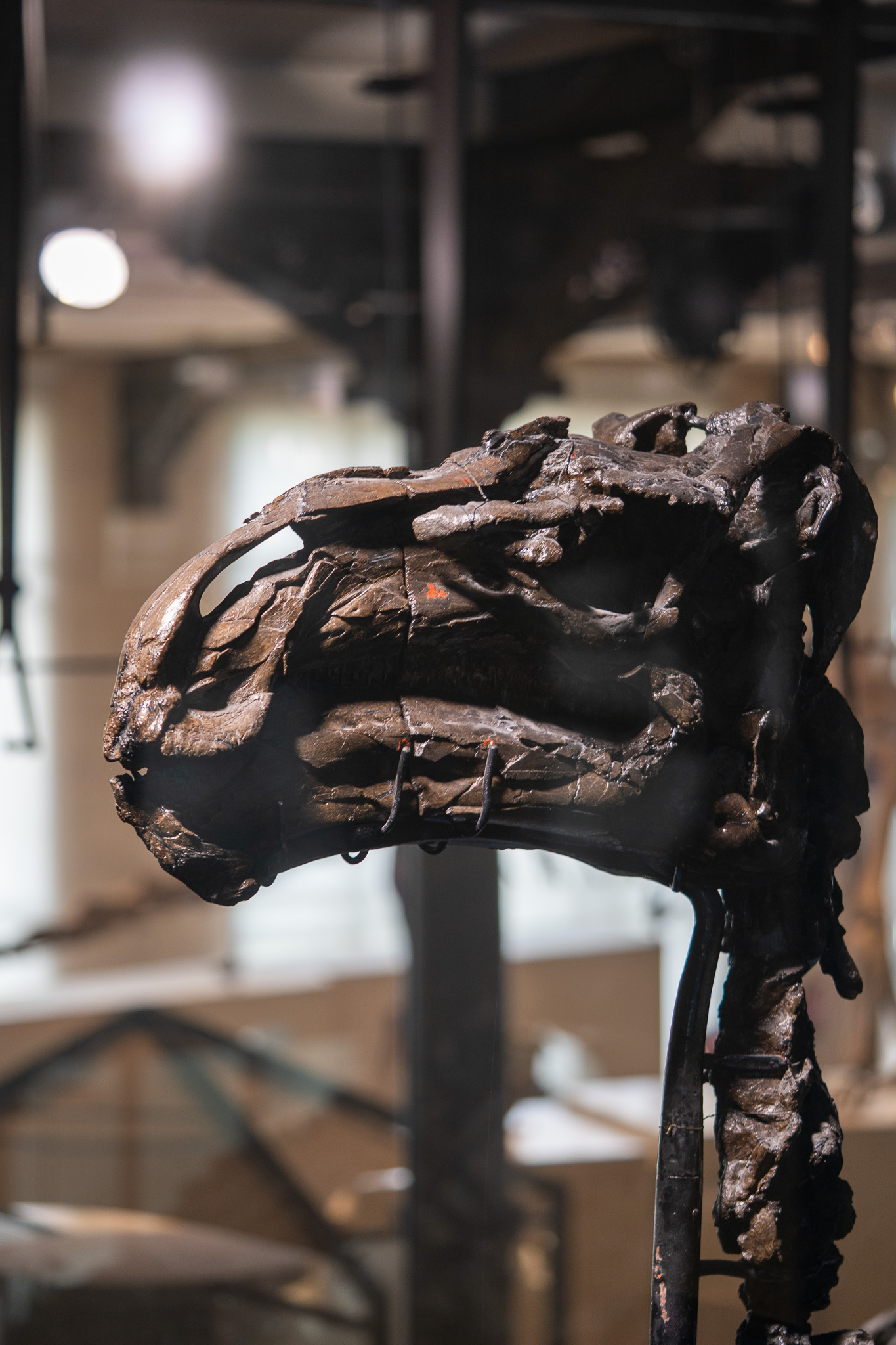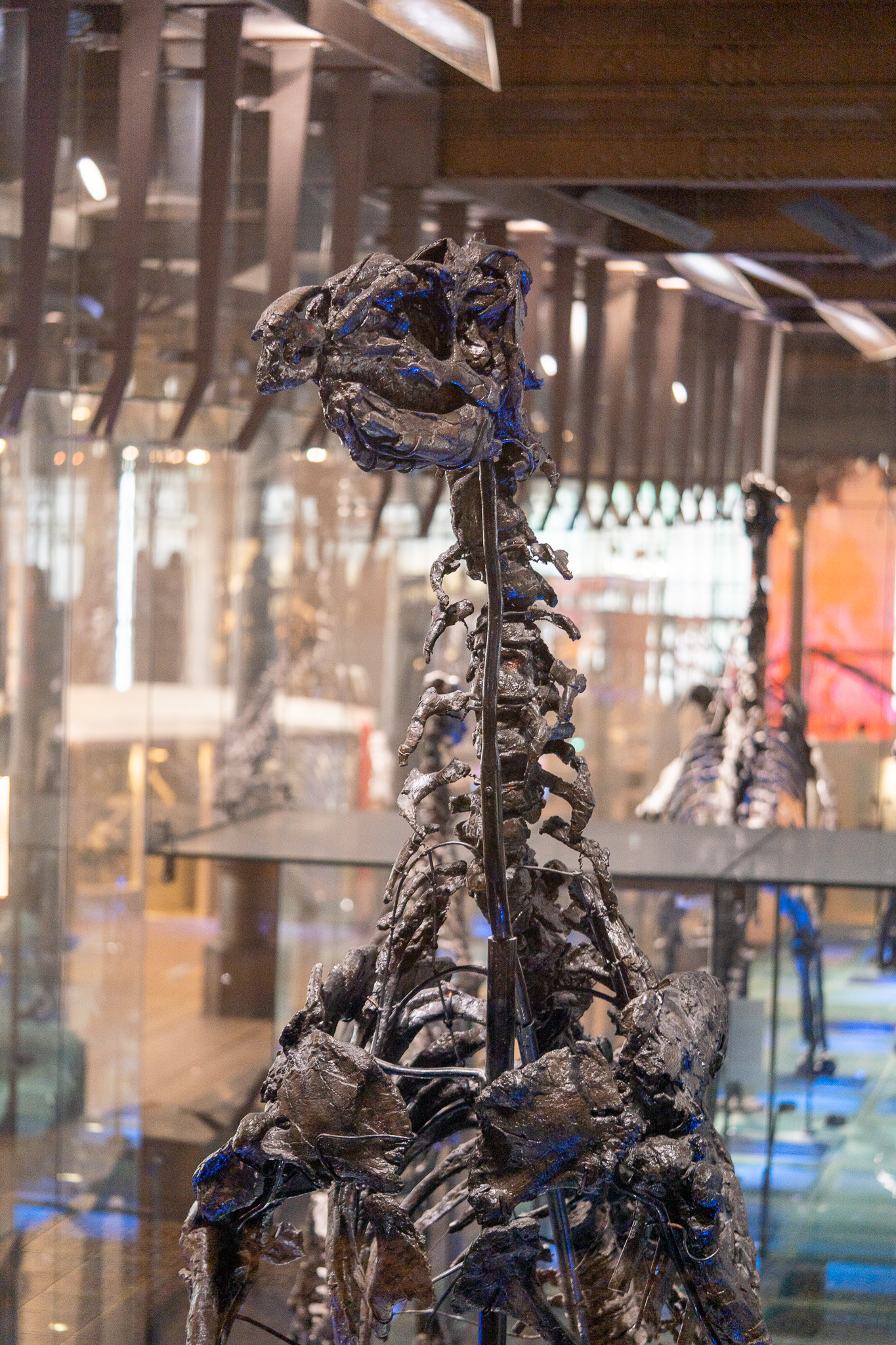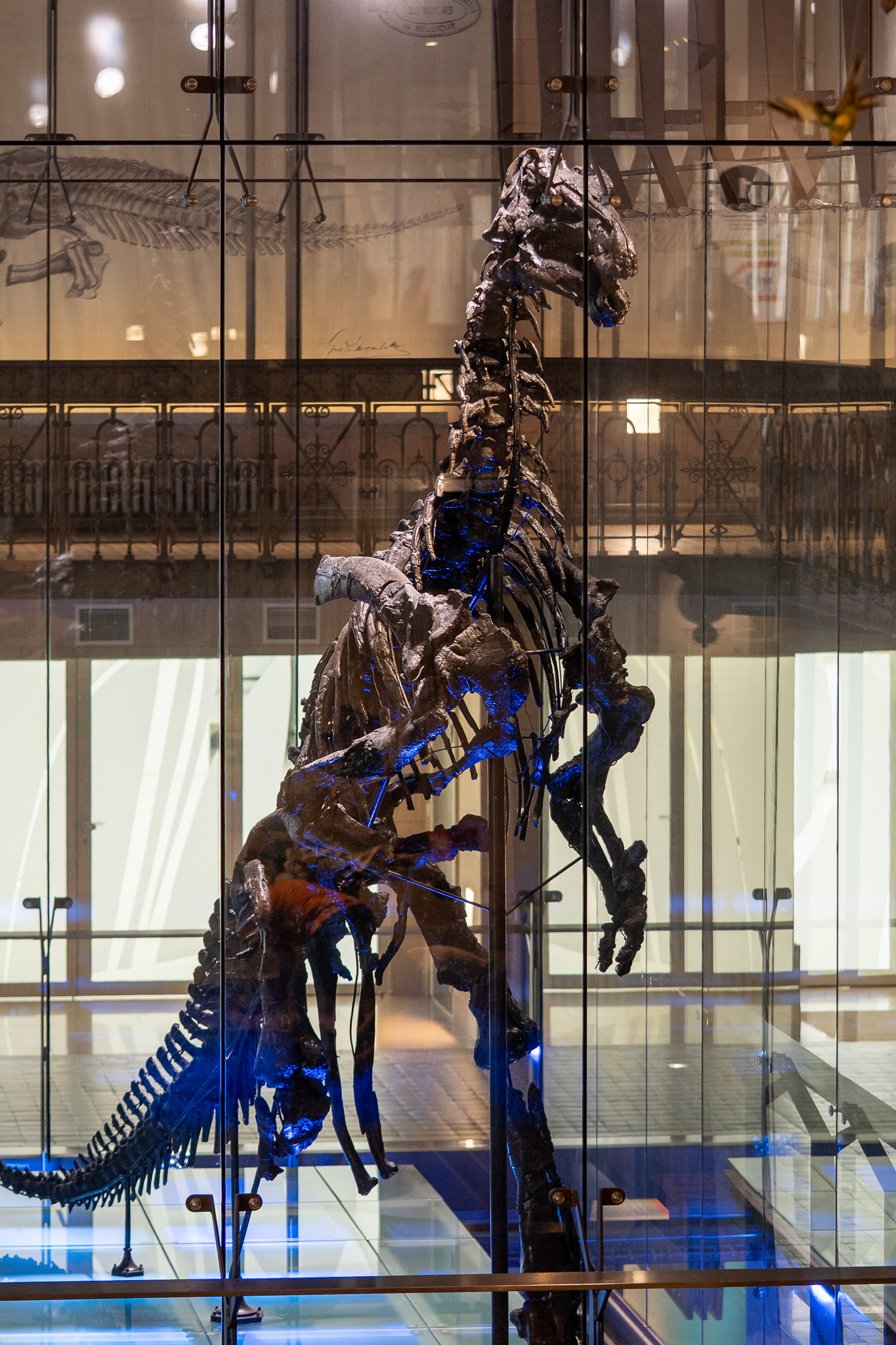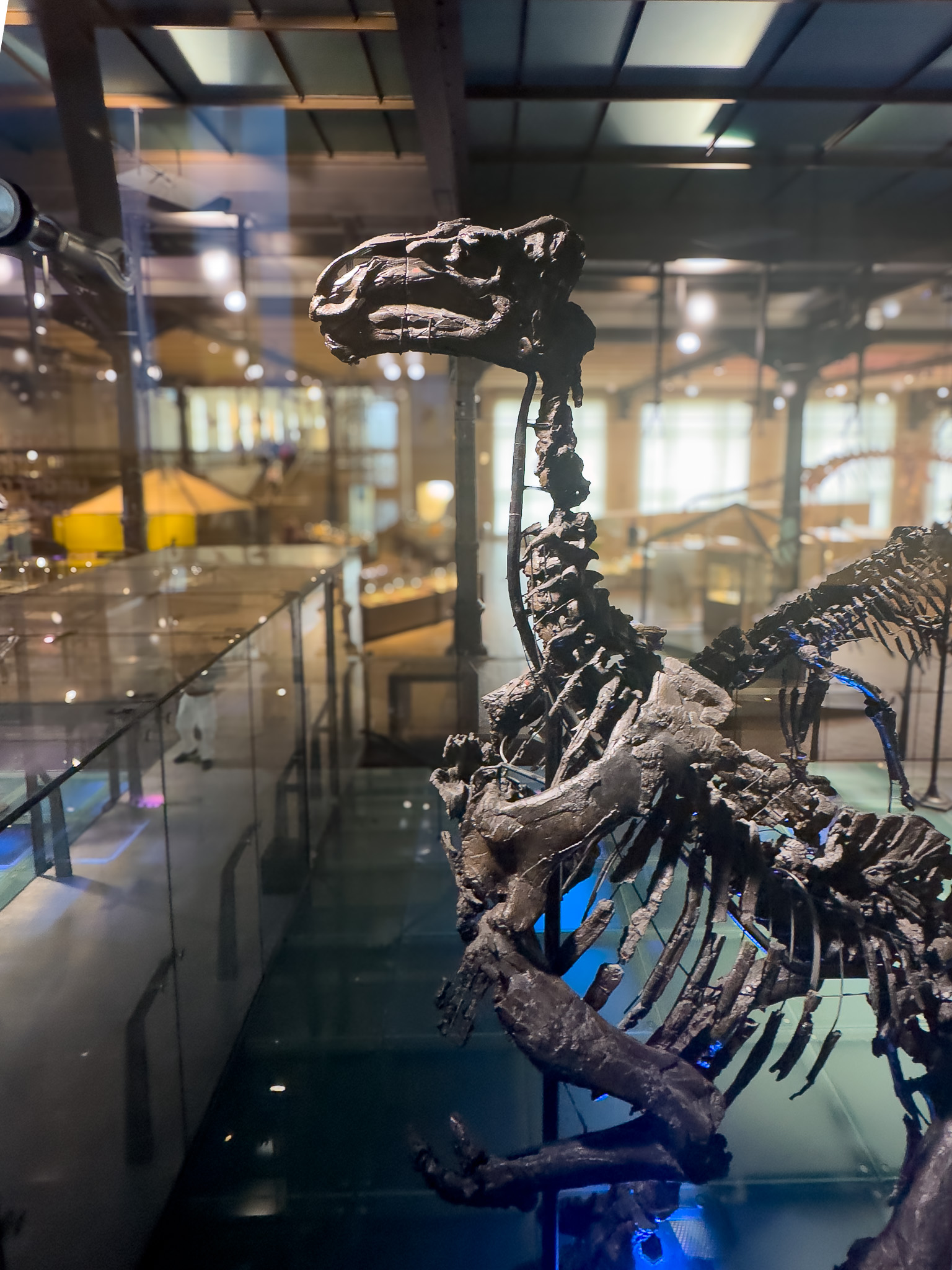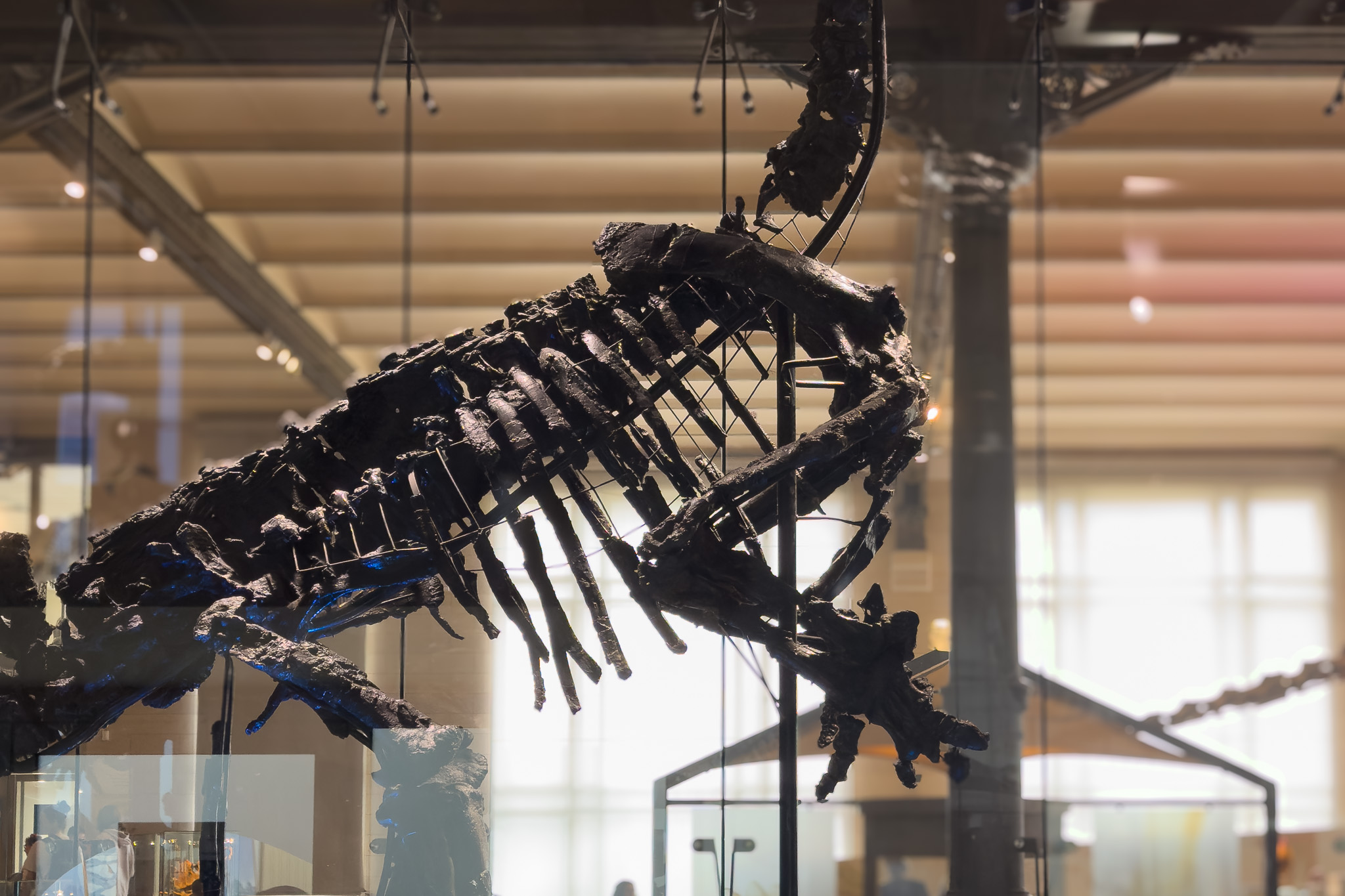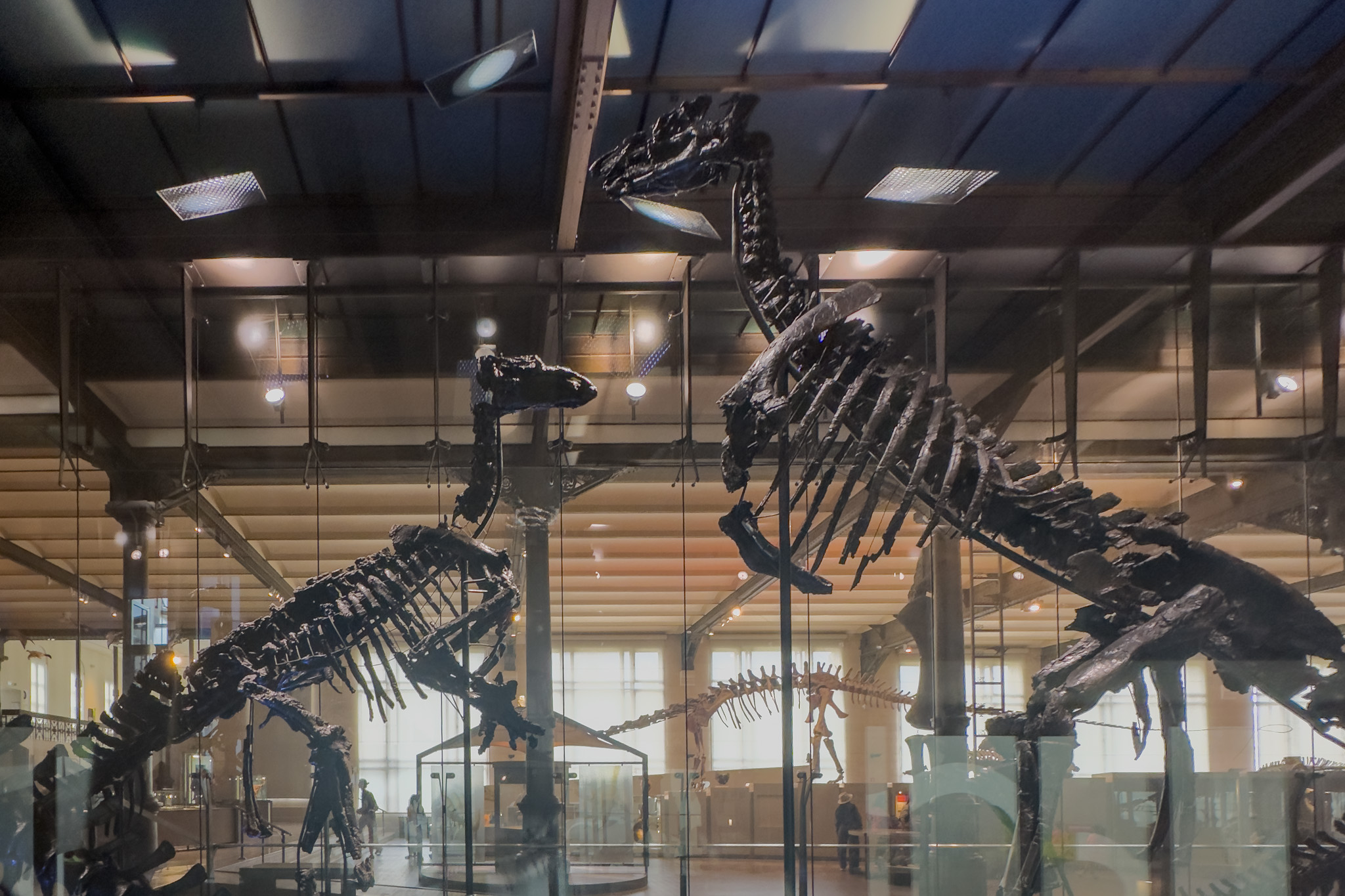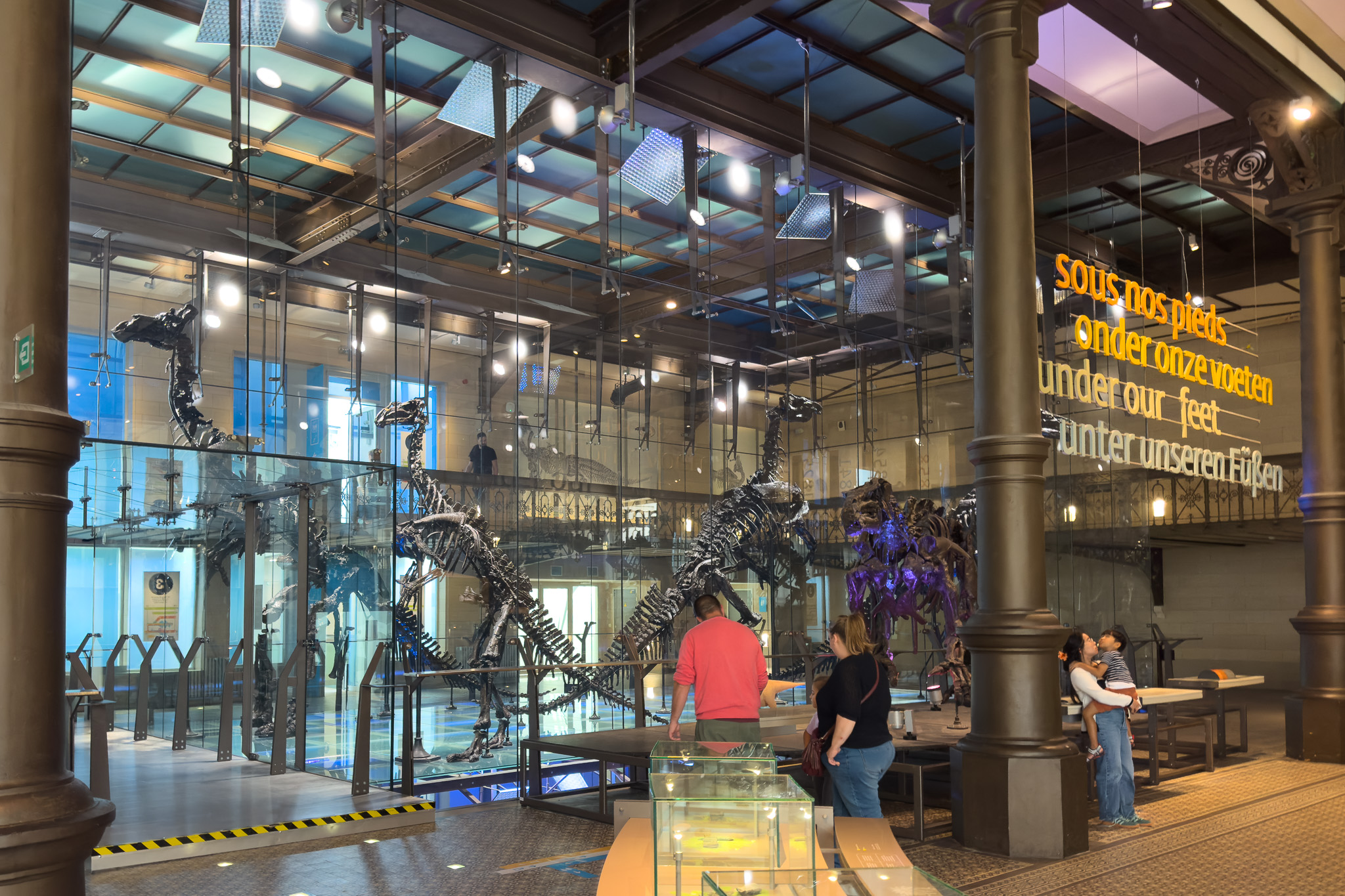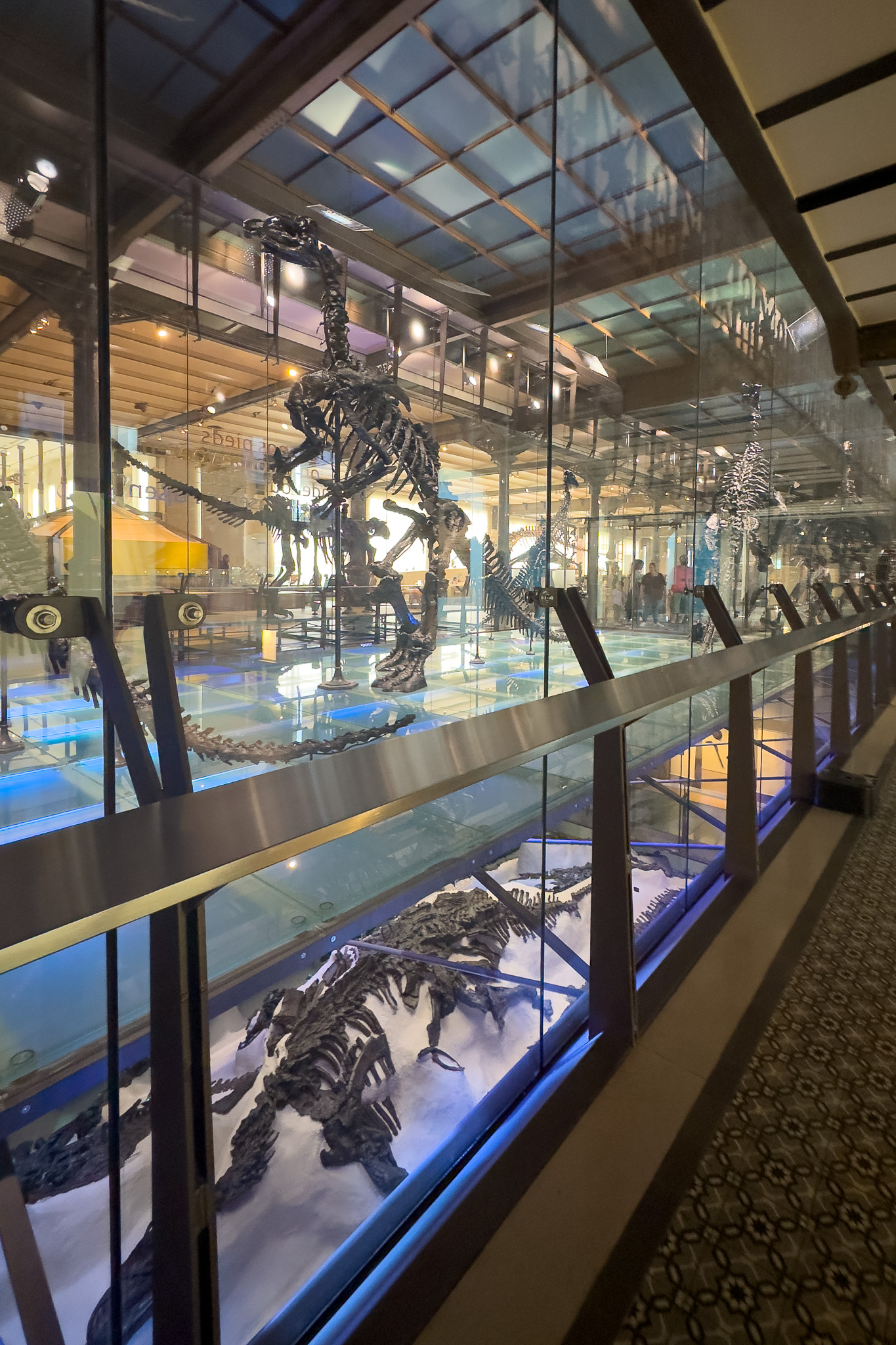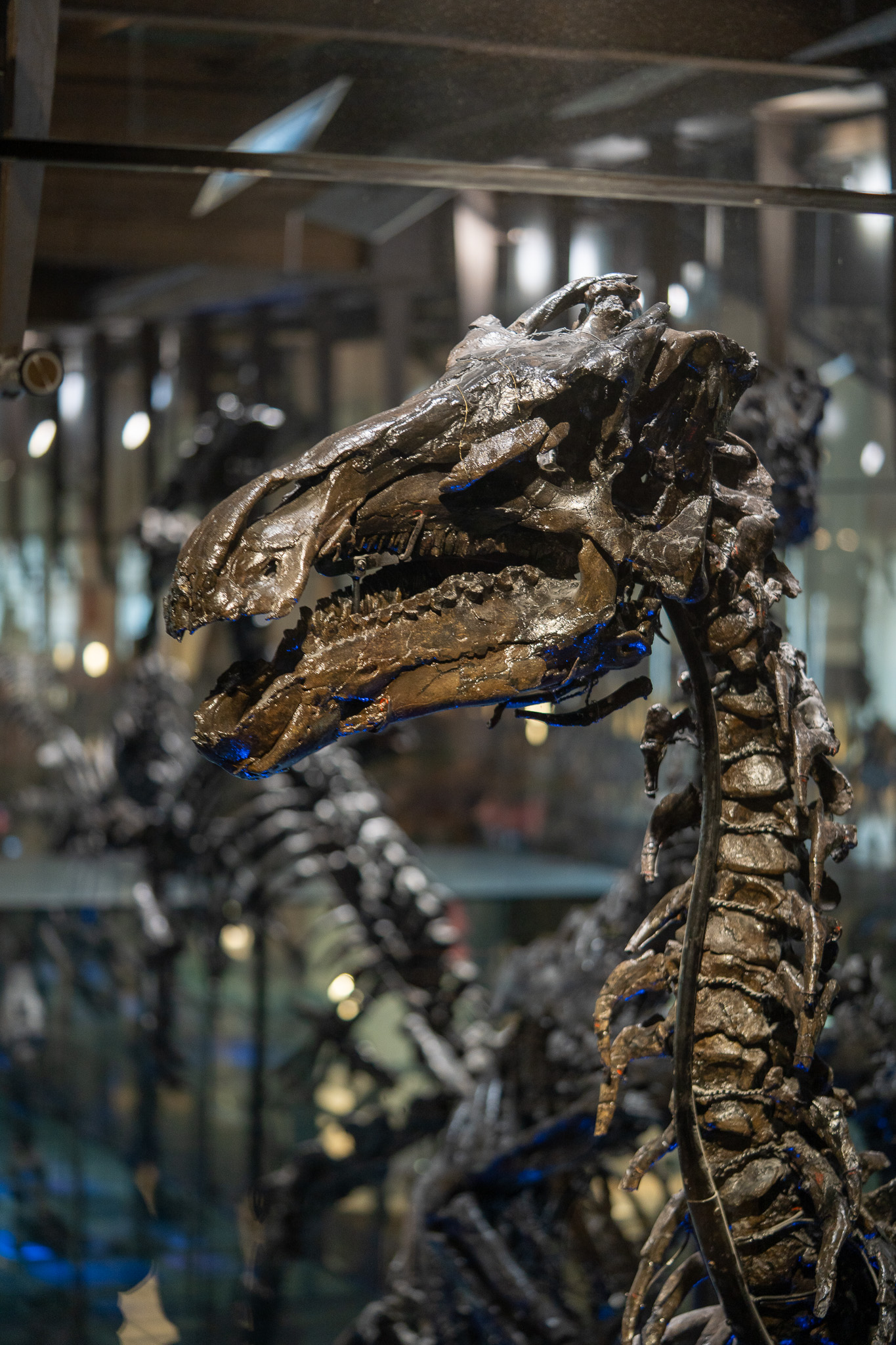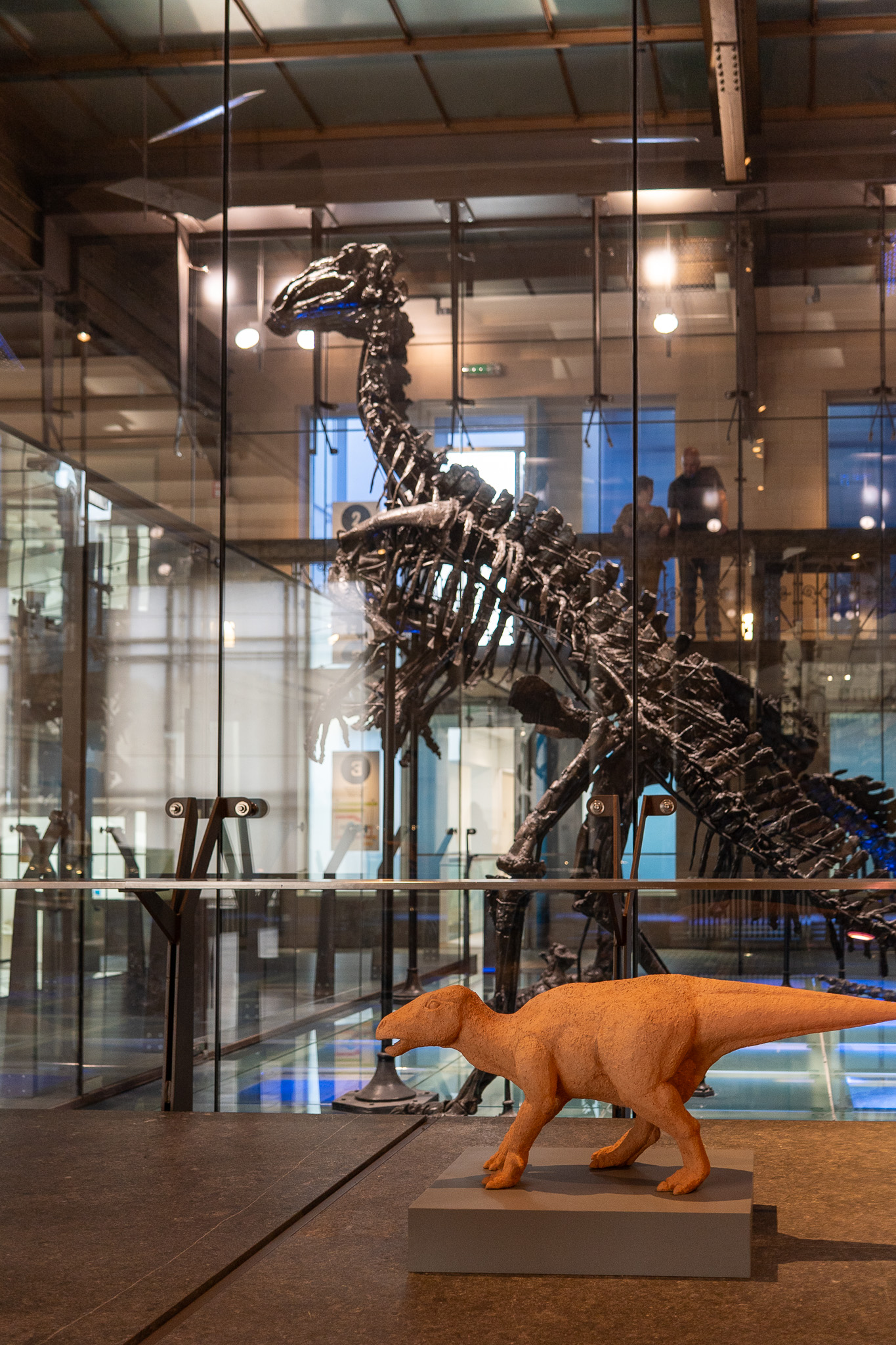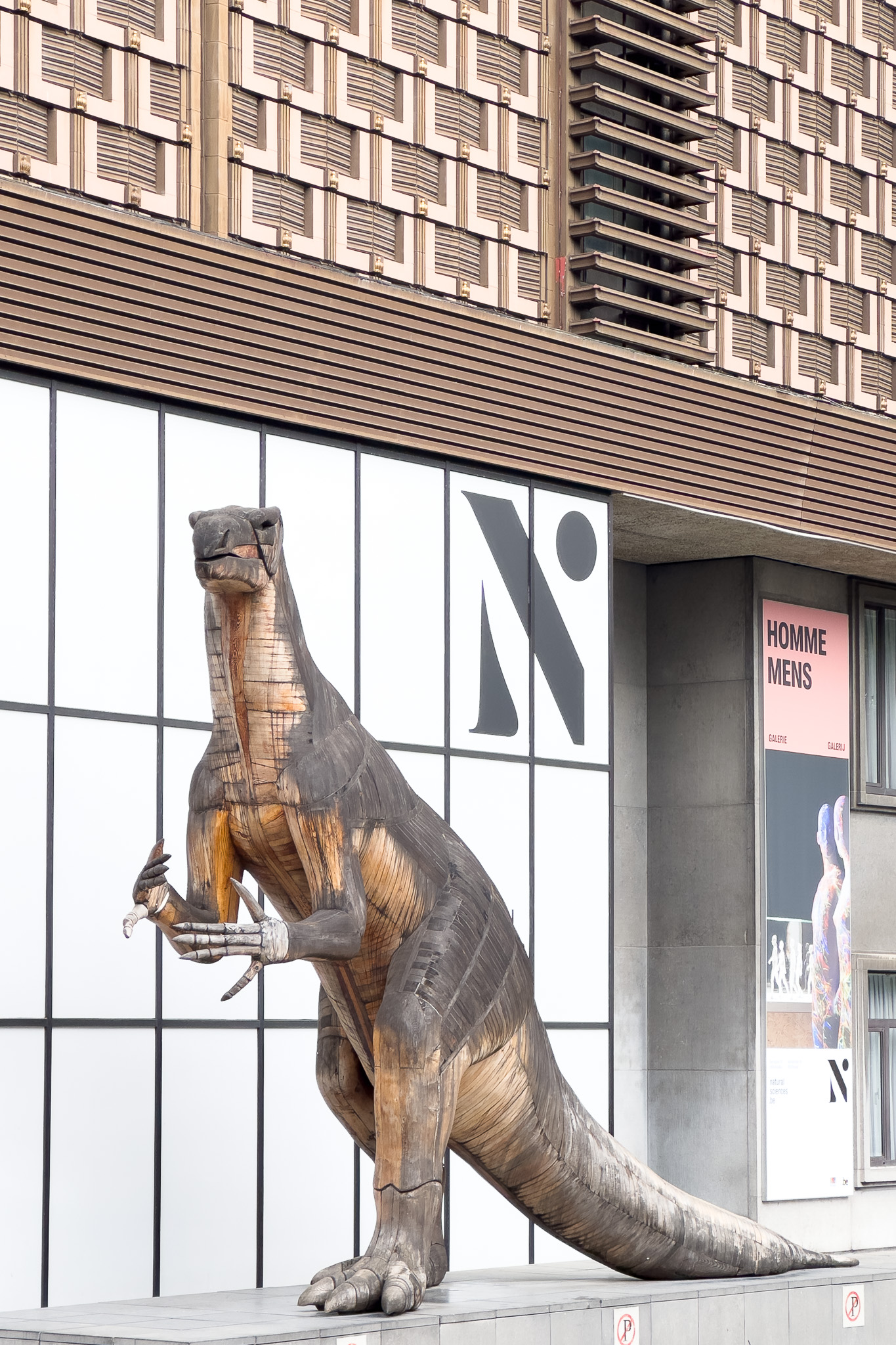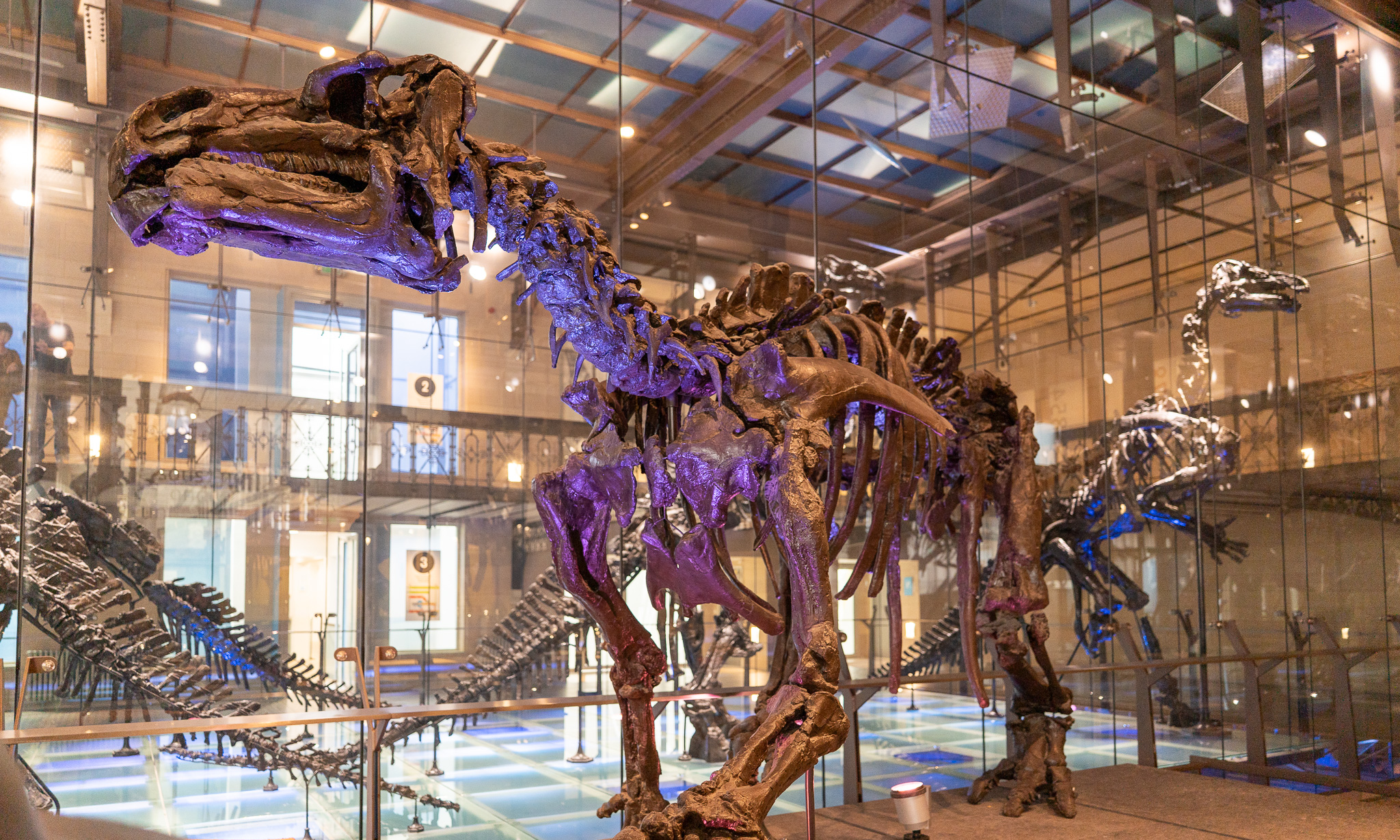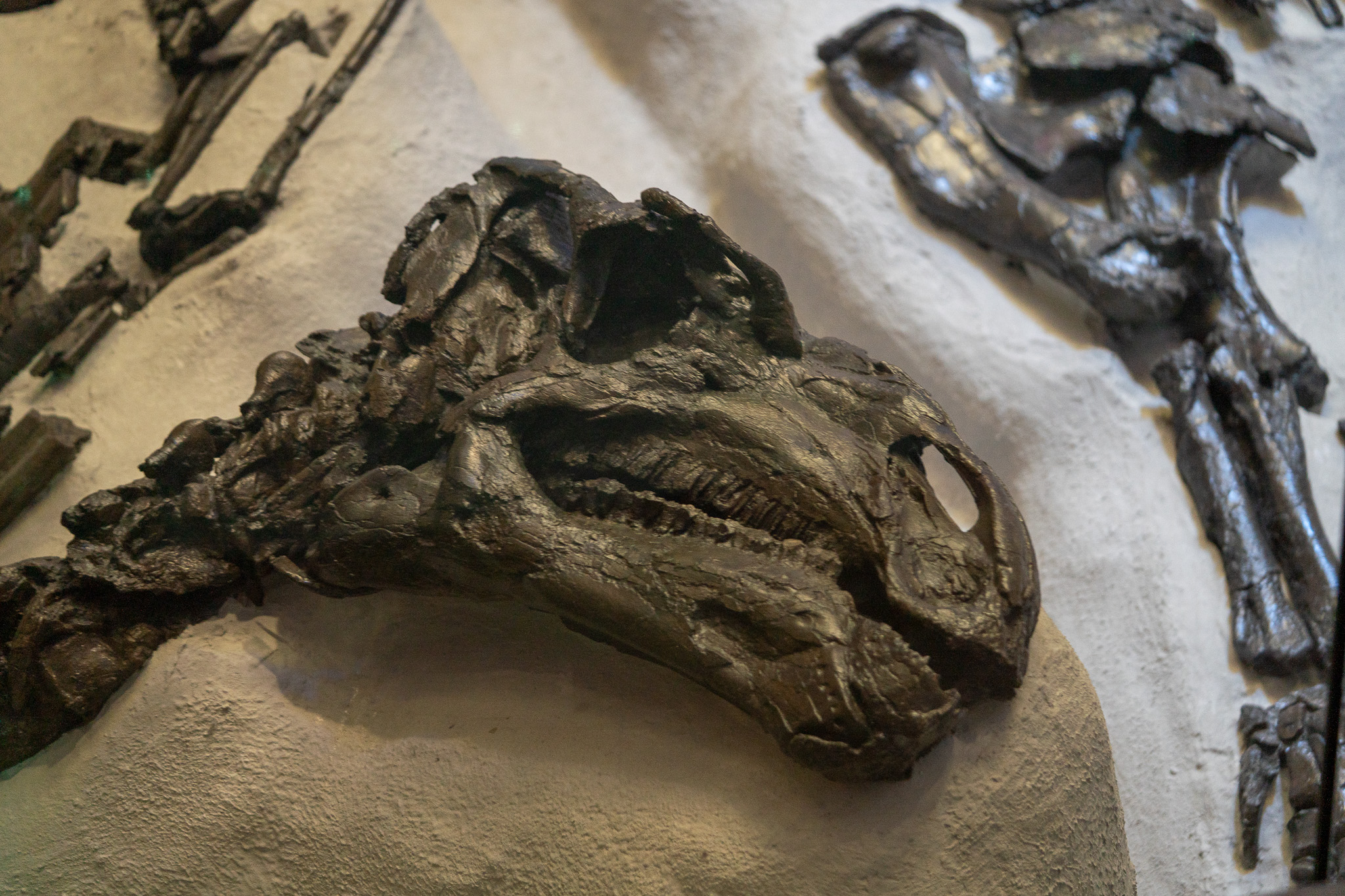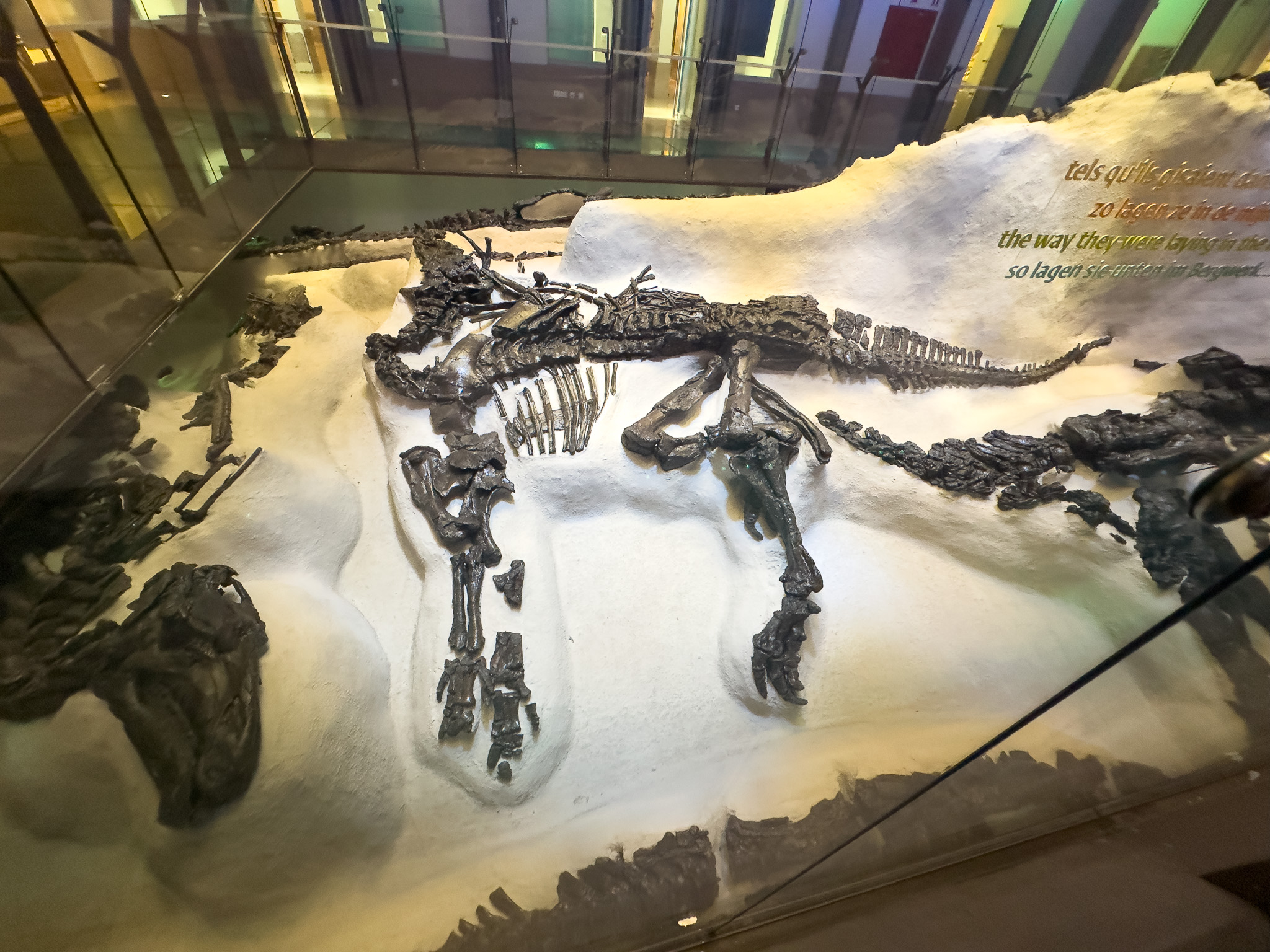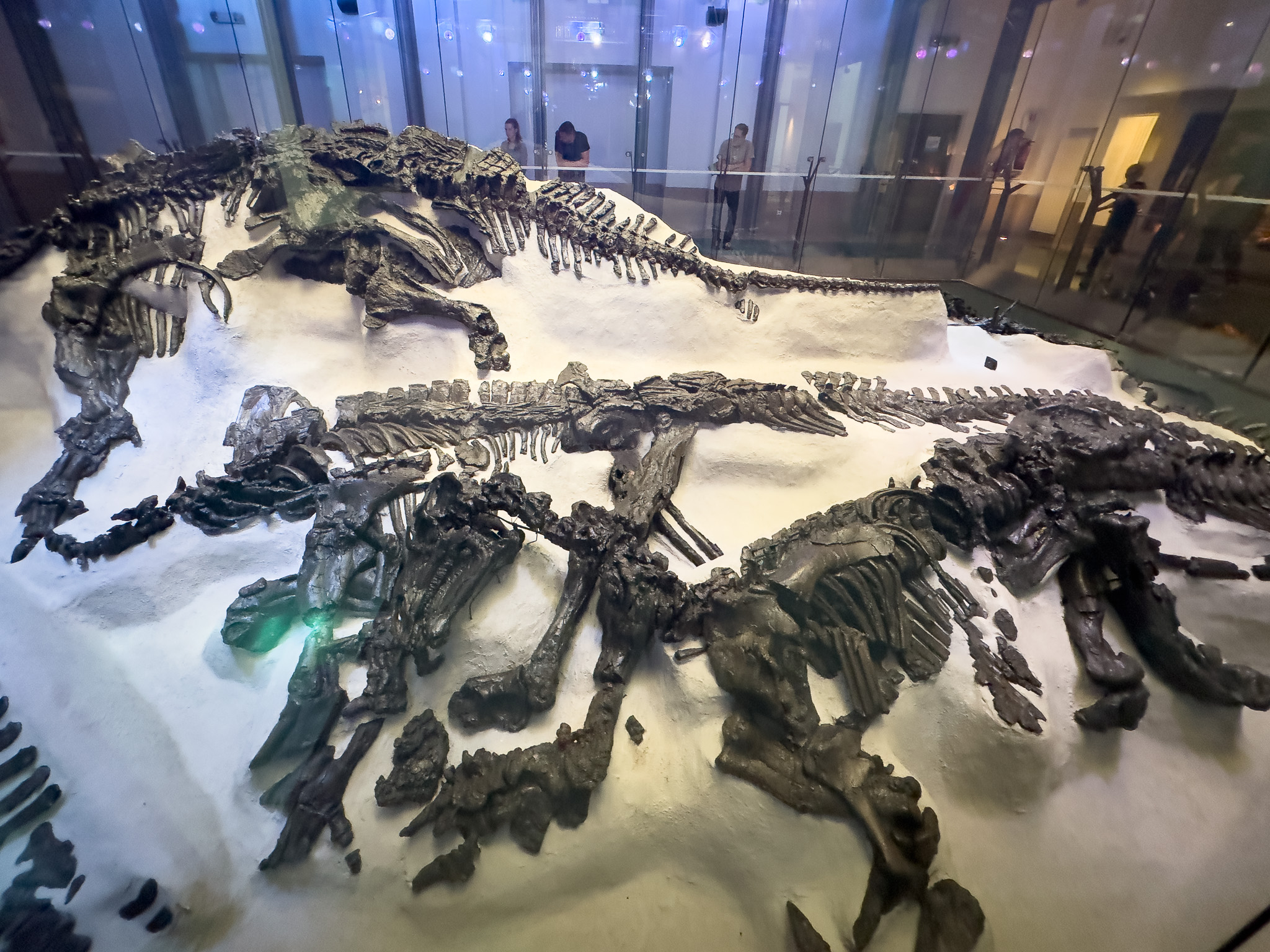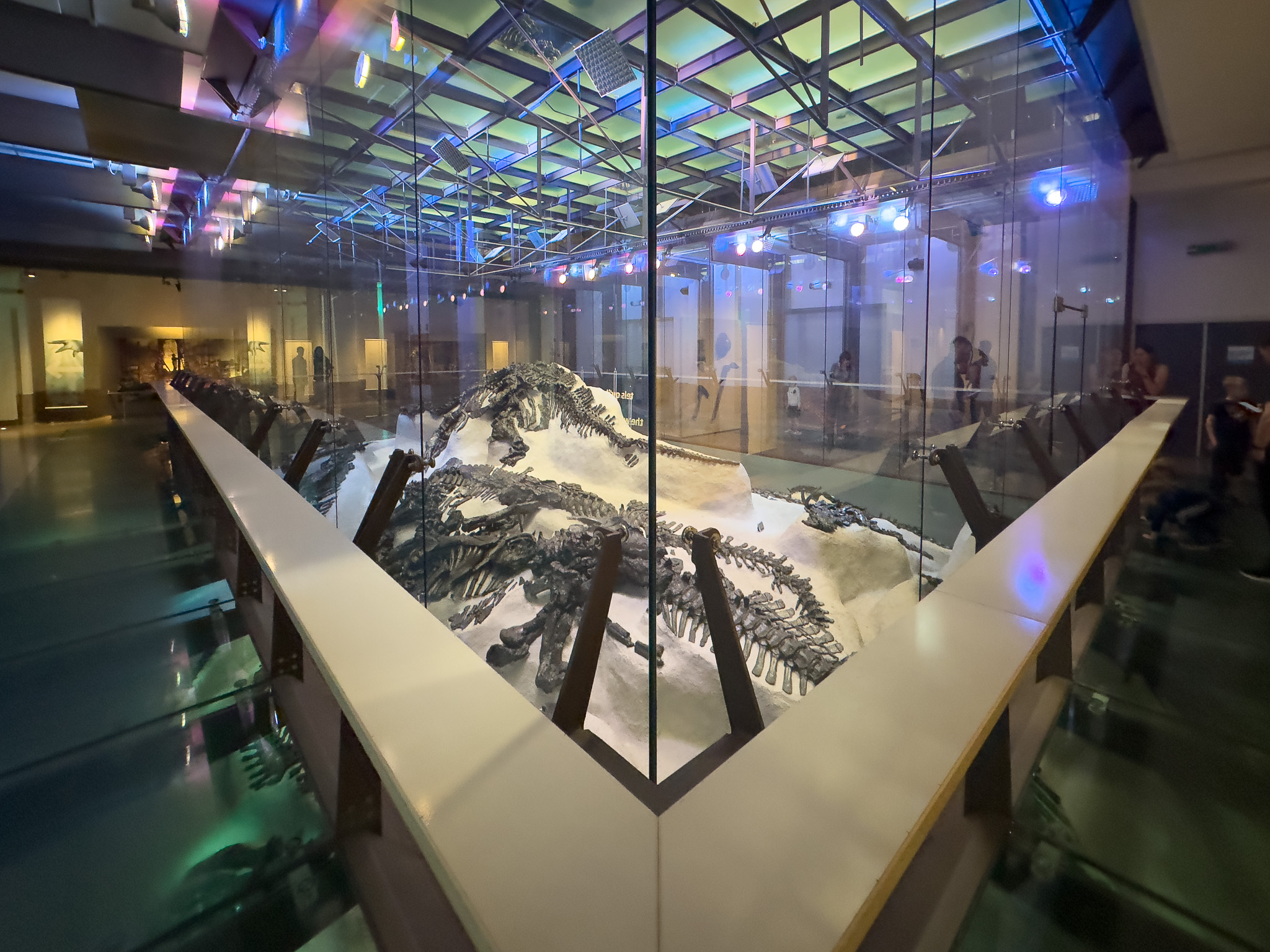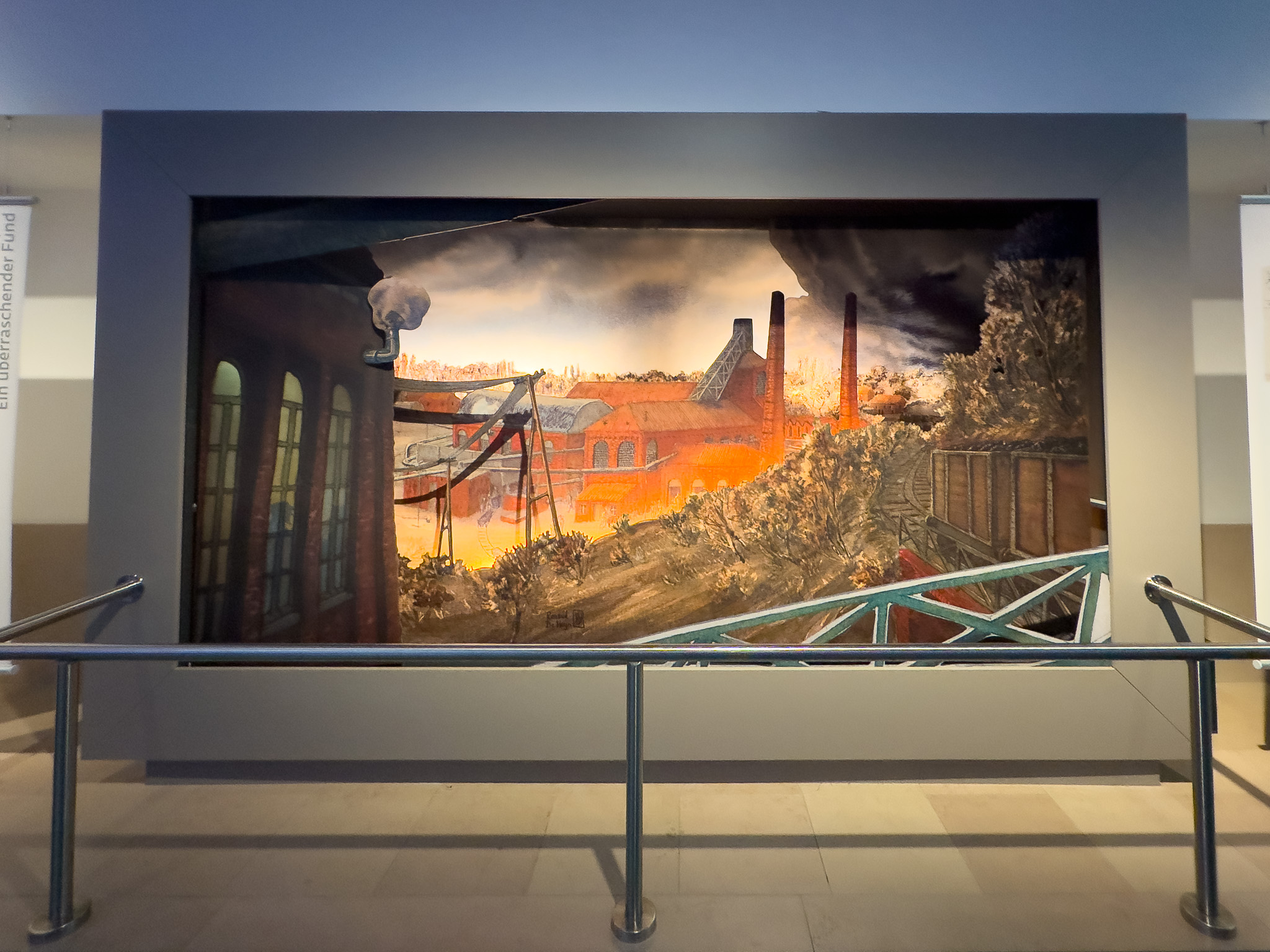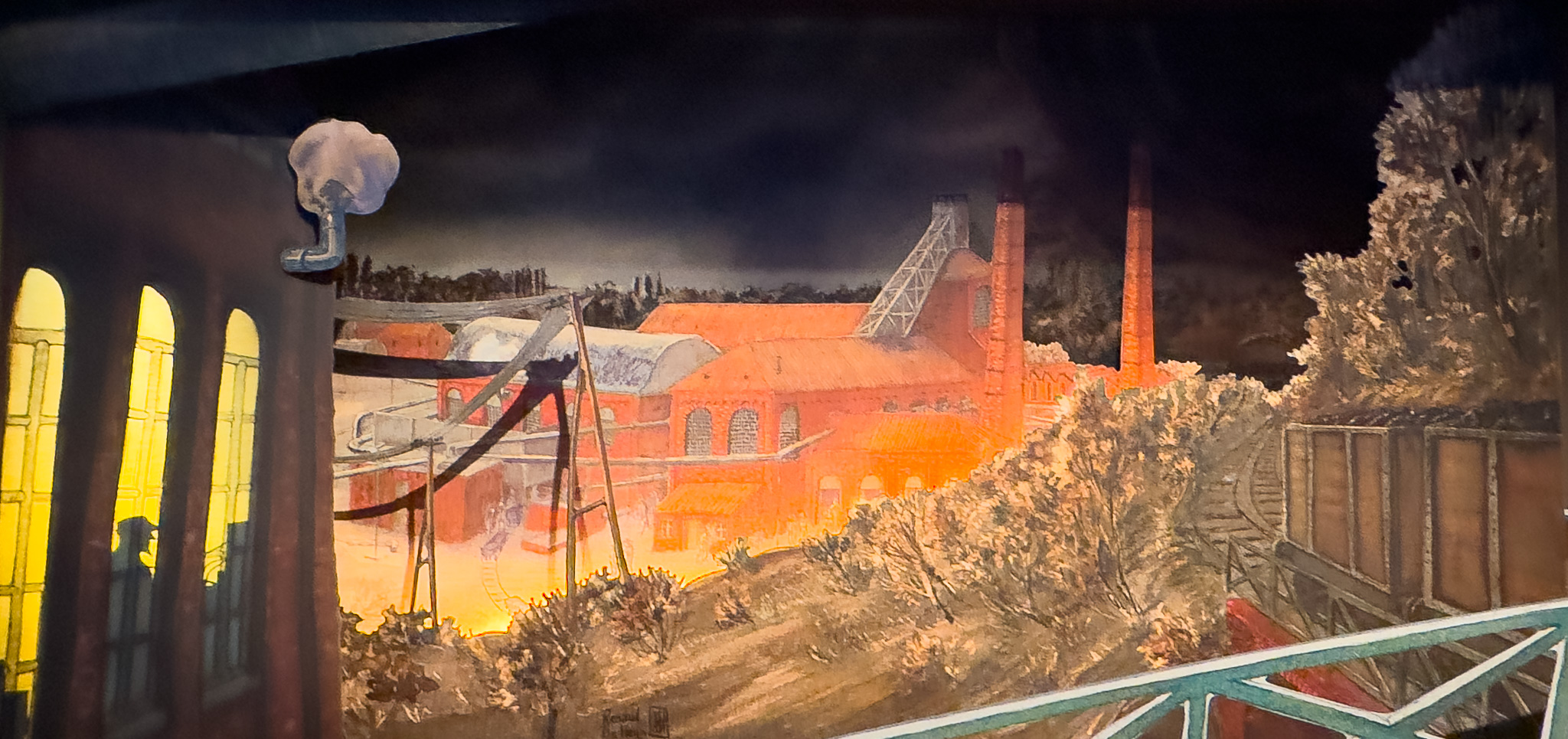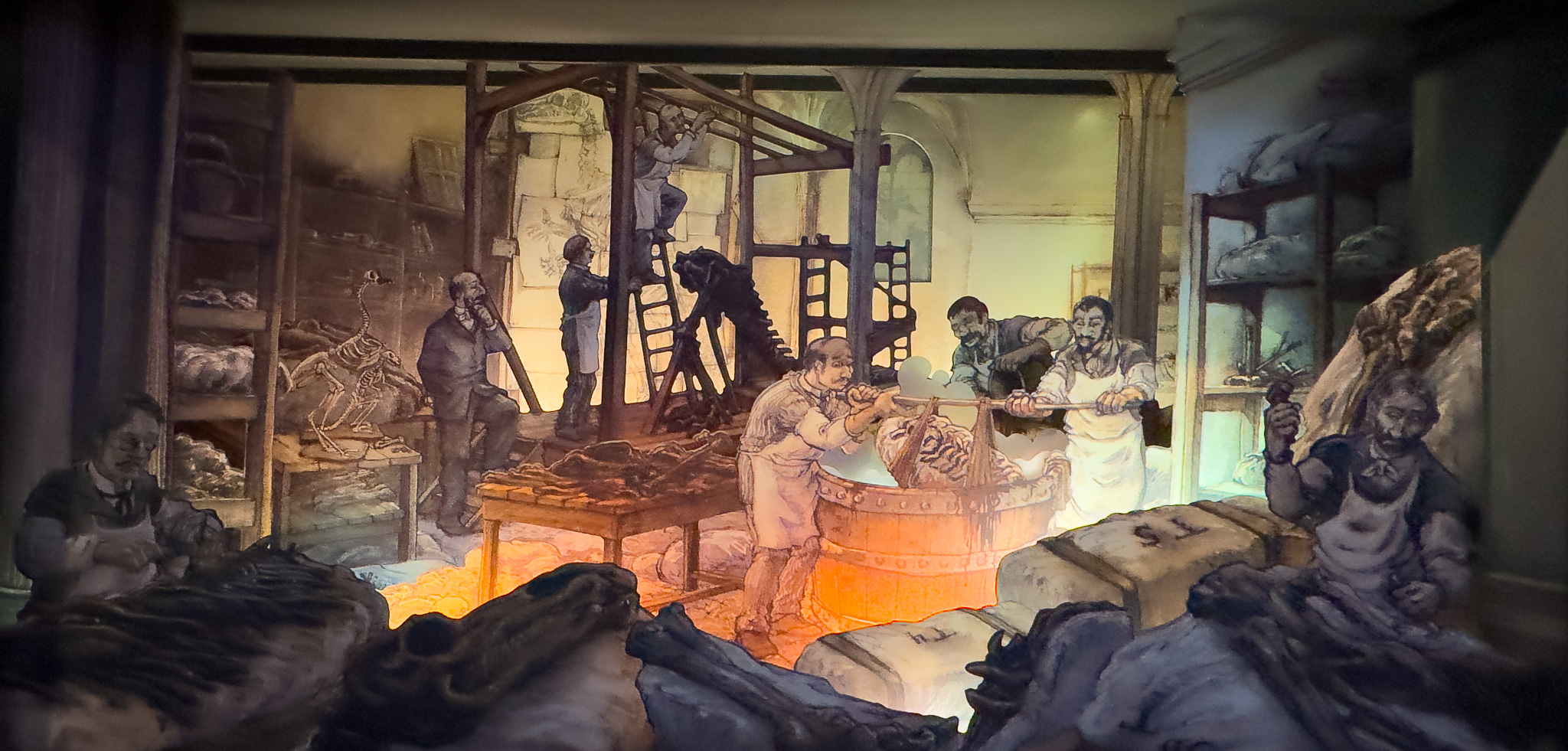
The Dinosaur Gallery in the Royal Belgian Institute of Natural Sciences (Brussels Museum of Natural History) includes the famous Bernissart Iguanodons. This consists of thirty complete or nearly complete skeletons excavated from an underground coal mine in southwest Belgium at the end of the nineteenth century. These Early Cretaceous fossil skeletons are displayed in a 300 m2 glass gallery. A second exhibit (on a floor directly below) depicts conditions of discovery and excavation, paying tribute to the excavation crews and to the taphonomic knowledge generated from their discovery in situ.

Skeletons in the gallery are mounted as they were in the 1880s, when first displayed. One skeleton is displayed outside the glass enclosure (shown at the top of this page). It is positioned in a relatively modern interpretation. Signage and animations surrounding the glass enclosure depict modern reconstructions as well as images from the original technical descriptions.

The Bernissart Iguanodons excavation was fundamentally important in the history of dinosaur palaeontology, giving European scientists a large amount of material from one group of animals. It fundamentally redefined Iguanodon away from the reconstructions offered in England based on material found or purchased by the Mantells, reconstructed by Benjamin Waterhouse Hawkins in Crystal Palace Park, and described in Owen’s (1854) visitor’s guide. Their discovery also energised the search for more European dinosaur material. Iguanodon material has been found in Belgium, Germany, England, and Spain.
The formal taxonomic name for these skeletons is Iguanodon bernissartensis, in the taxonomic family, Iguanodontidae. As new material has been studied, researchers have reorganised relationships based on fossil remains and have renamed many items of older material. For instance, the “Iguanodon” first described by Gideon Mantell, once known as Iguanodon mantelli, has been renamed Mantellisaurus atherfieldensis.
Gallery of Bernissart Iguanodons
Gallery about Excavation of Bernissart Iguanodons
Additional Readings
- Pascal Godefroit (ed.) (2012) Bernissart Dinosaurs and Early Cretaceous Terrestrial Ecosystems (Indiana University Press), ISBN 9780253357212, publishes detailed technical studies of the Bernissart material, and the Iguanodontidae in general, in this paleontological monograph.
- Pascal Godefroit (2024) Les Iguanodons de Bernissart: Des fossiles et des hommes (Février), ISBN 2803109212, updates the 2012 work with more historical material.
- Sandra Cordier (2017) The Bones of the Borinage: The Story Behind the Iguanodons of Bernissart(Uitgeverij Vrijdag), ISBN 9789460014871, provides a rich social and cultural history of the Bernissart palaeontology.
- Mark P Witton and Ellinor Michel (2022) The Art and Science of the Crystal Palace Dinosaurs (Crowood Press), ISBN 978-0-7198-4049-4, presents the best, modern study of the Crystal Palace Iguanodons.
